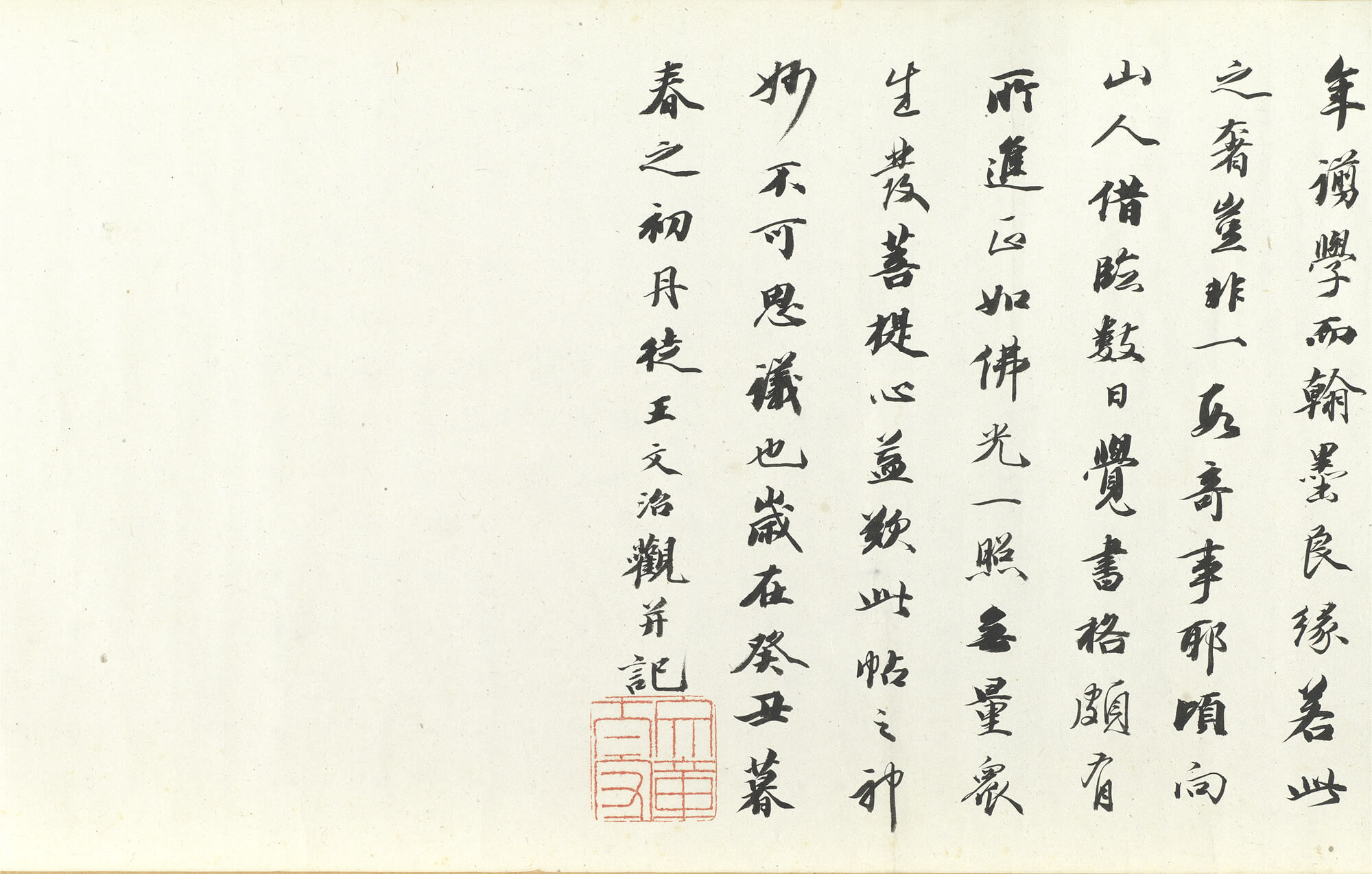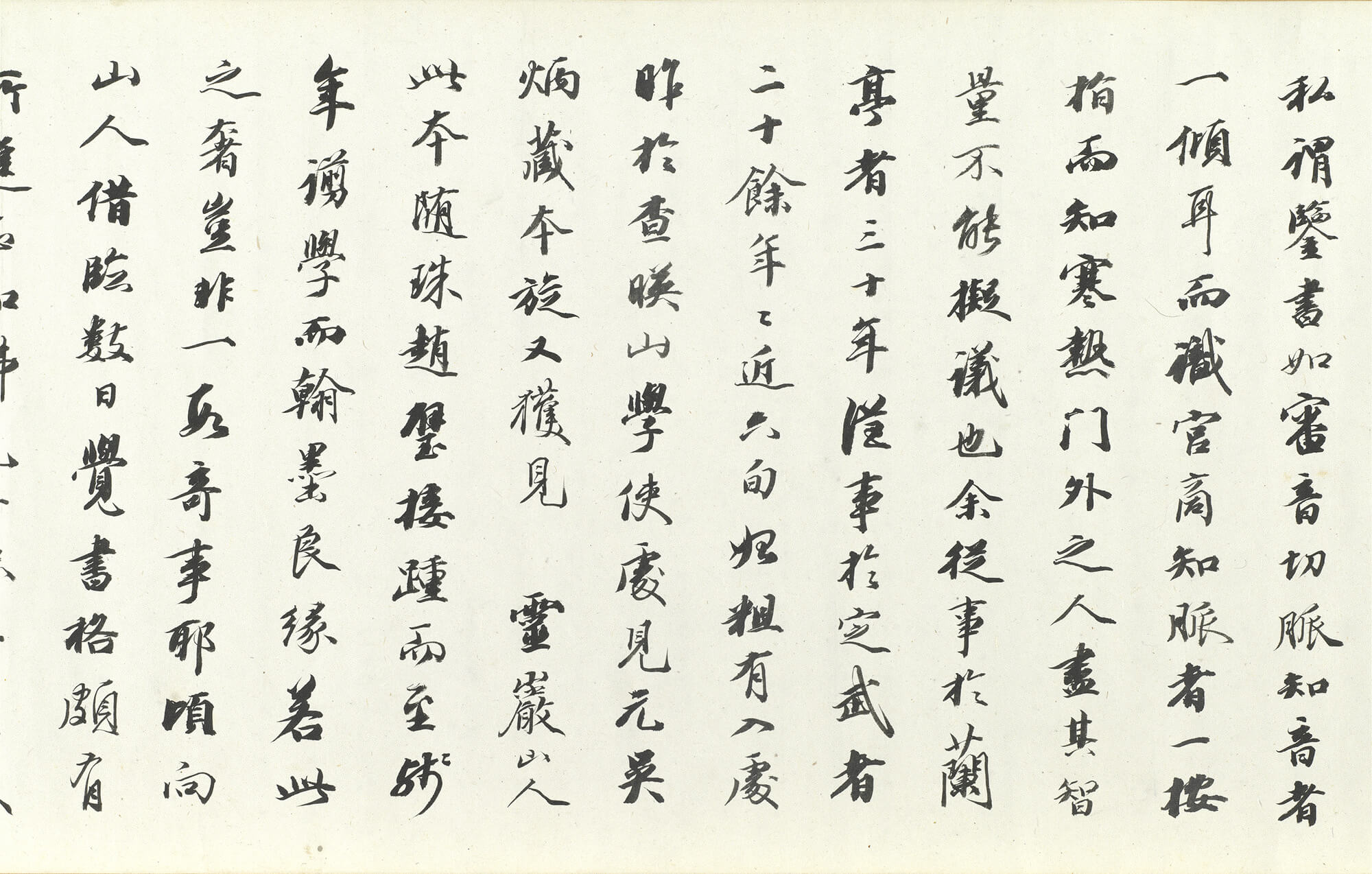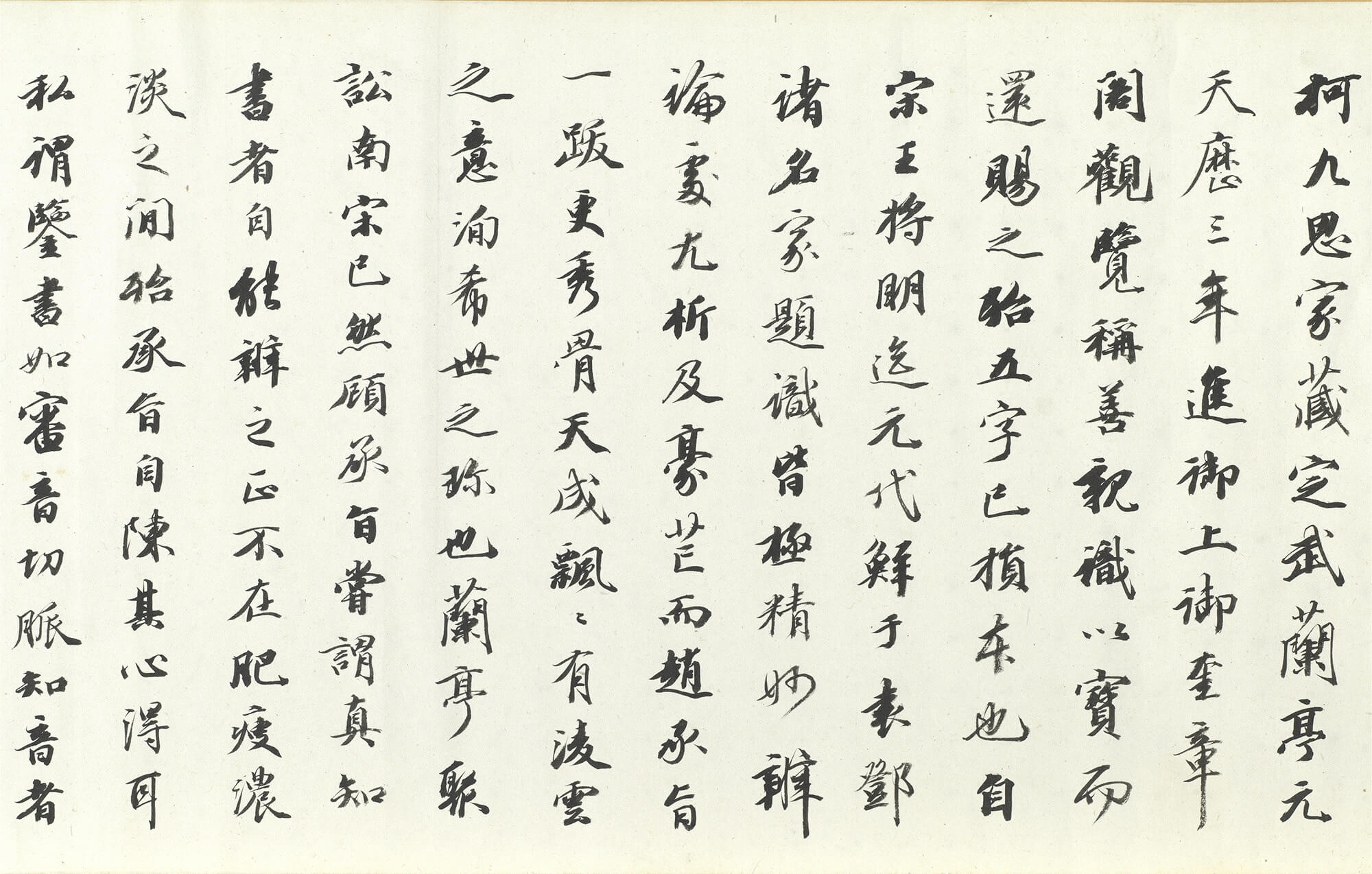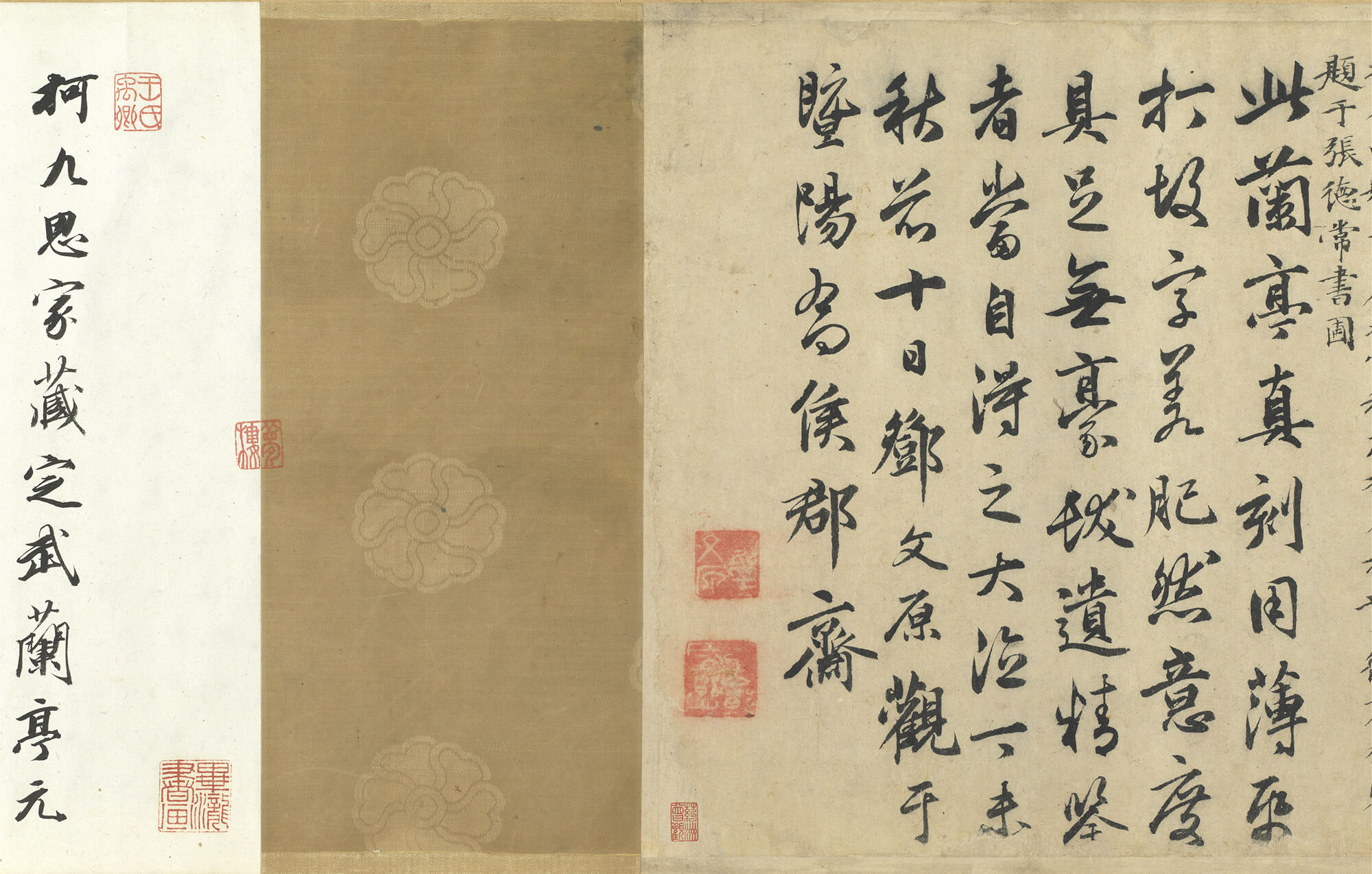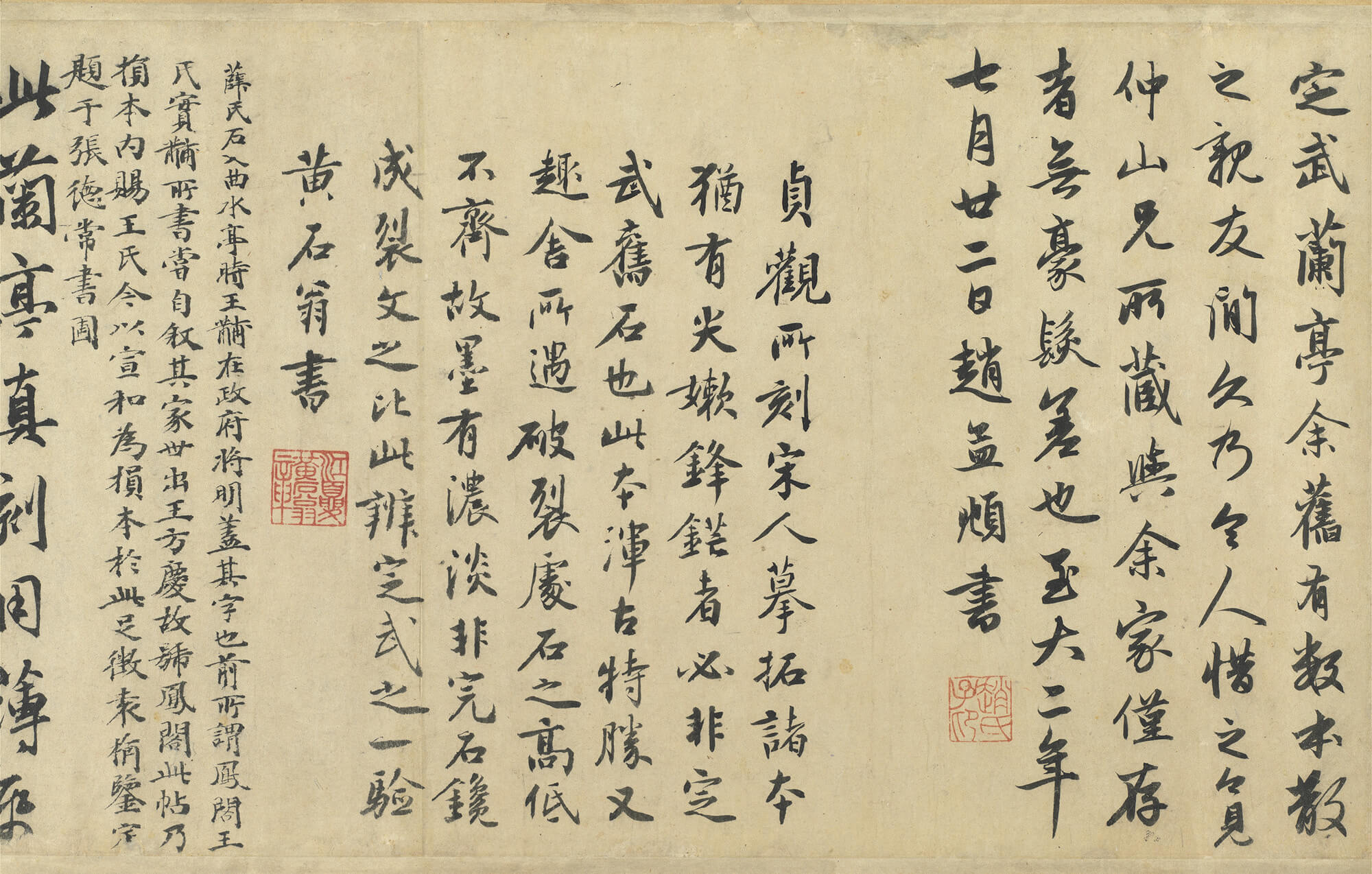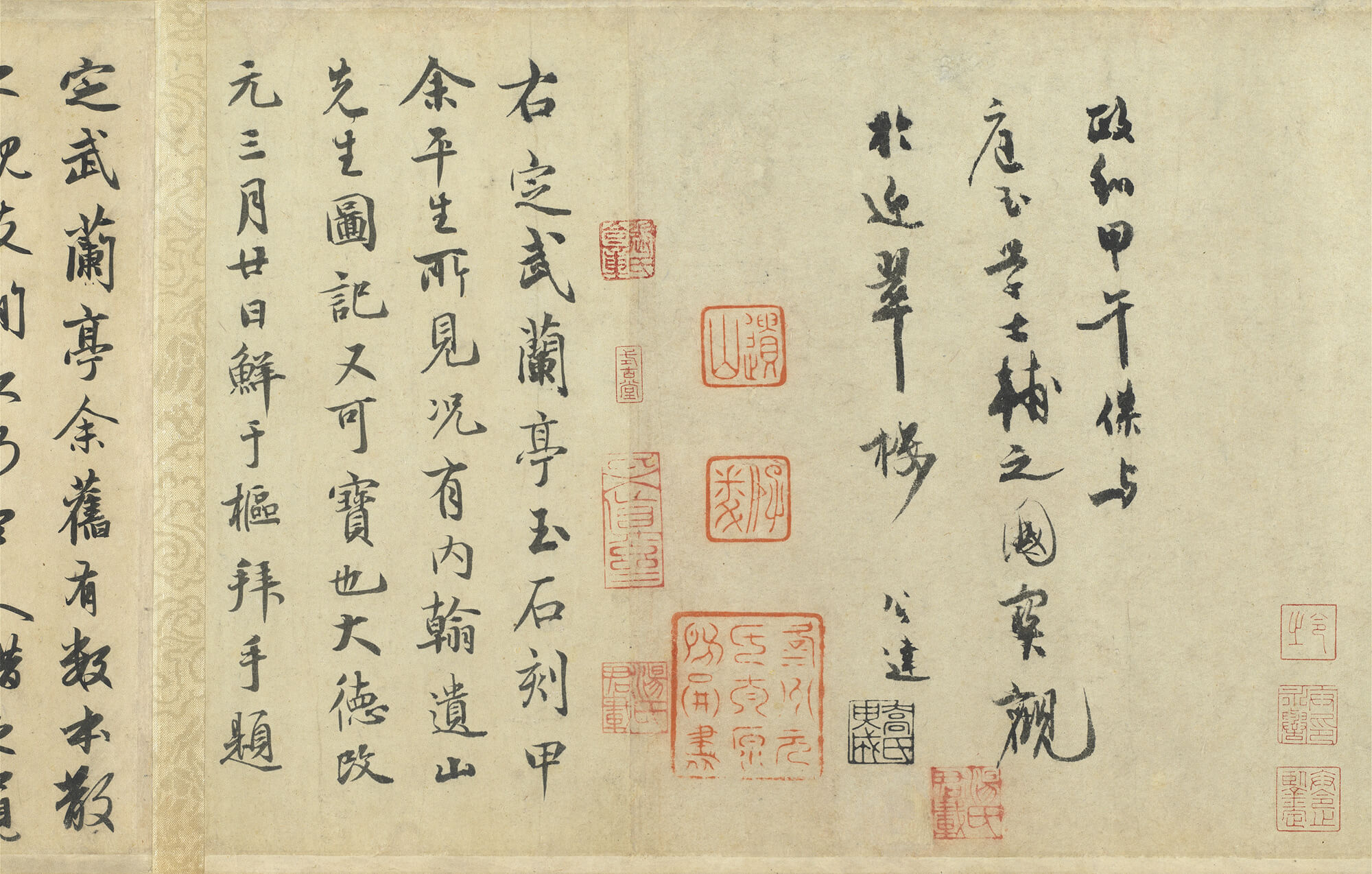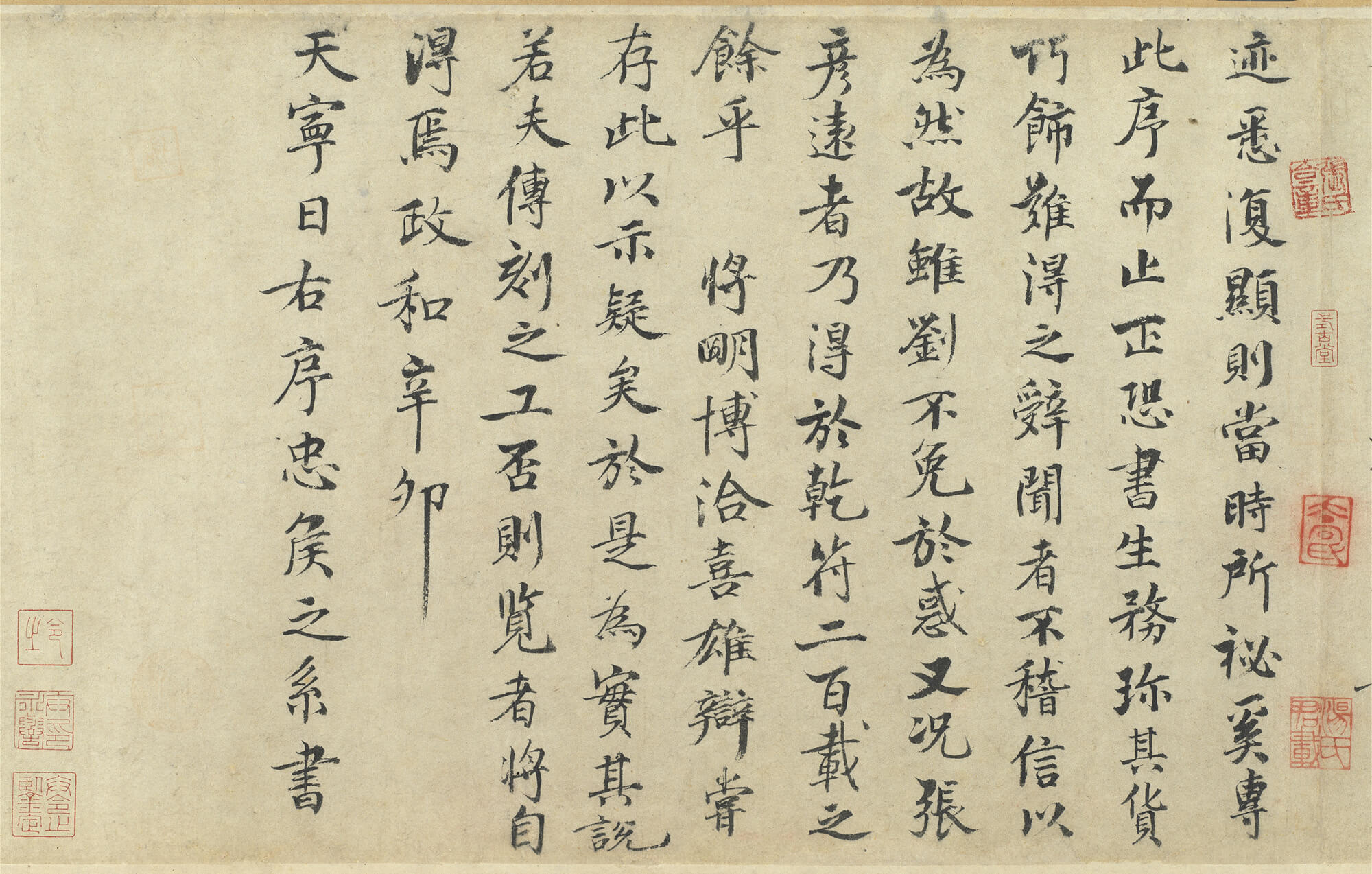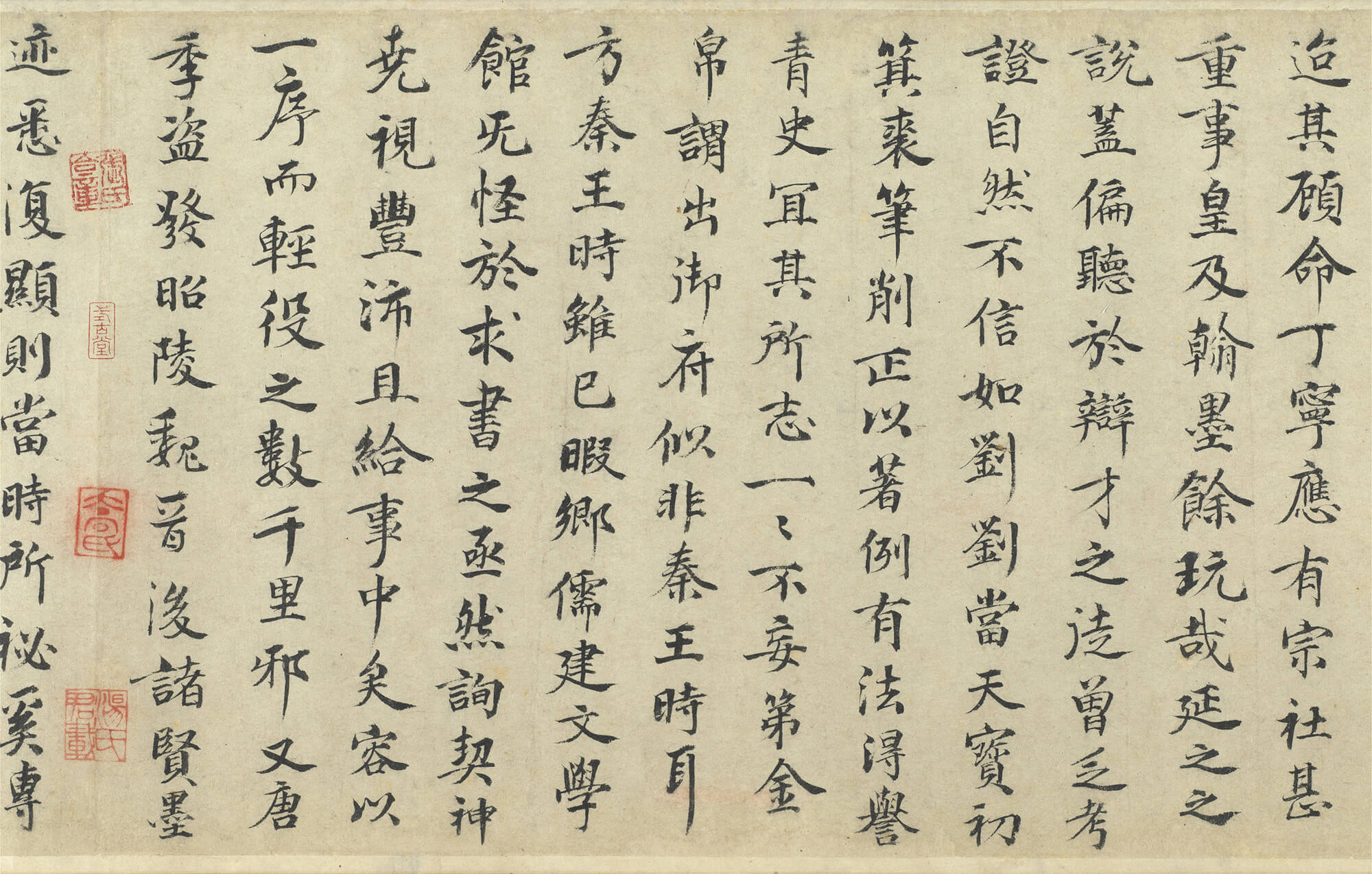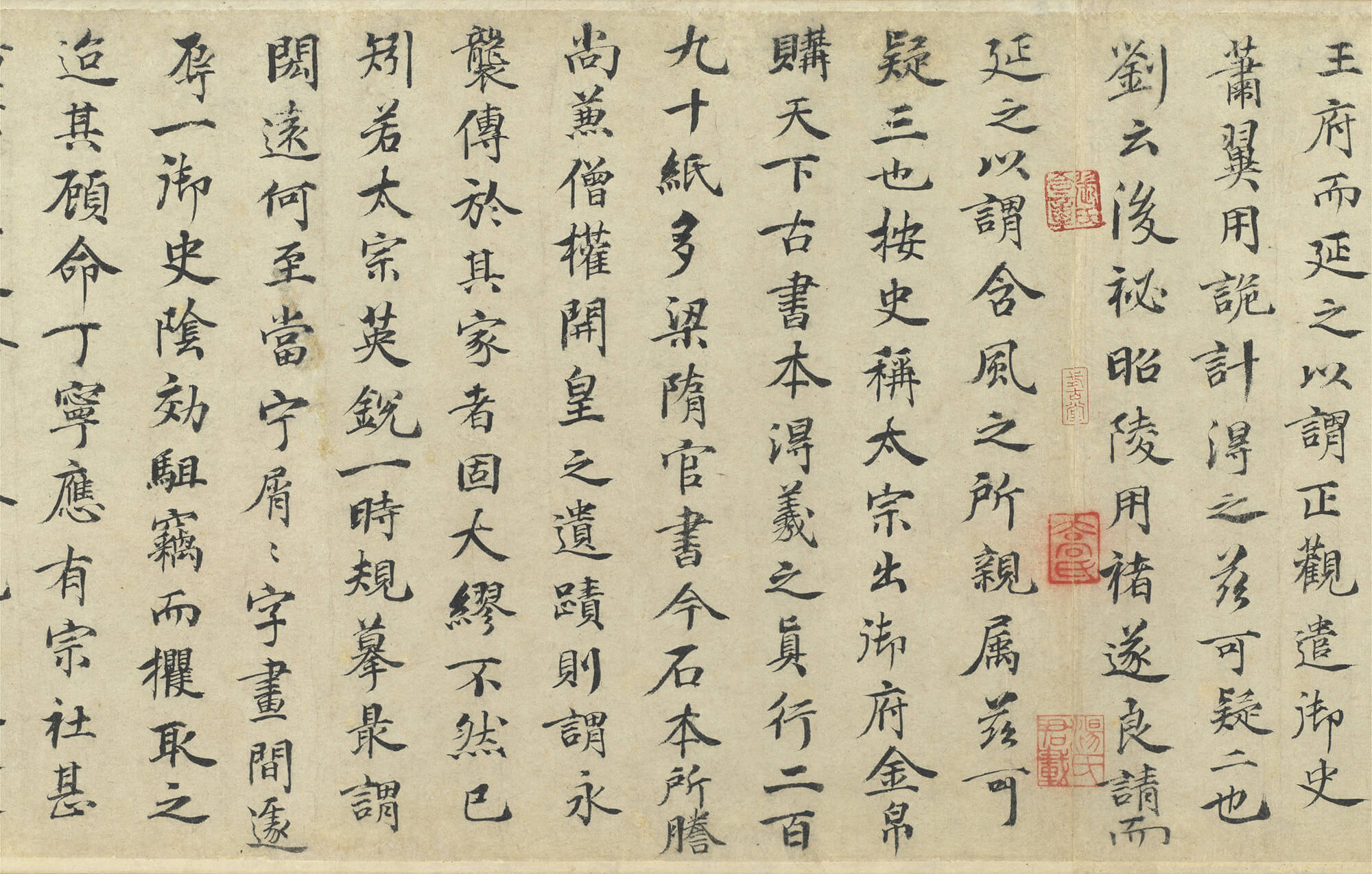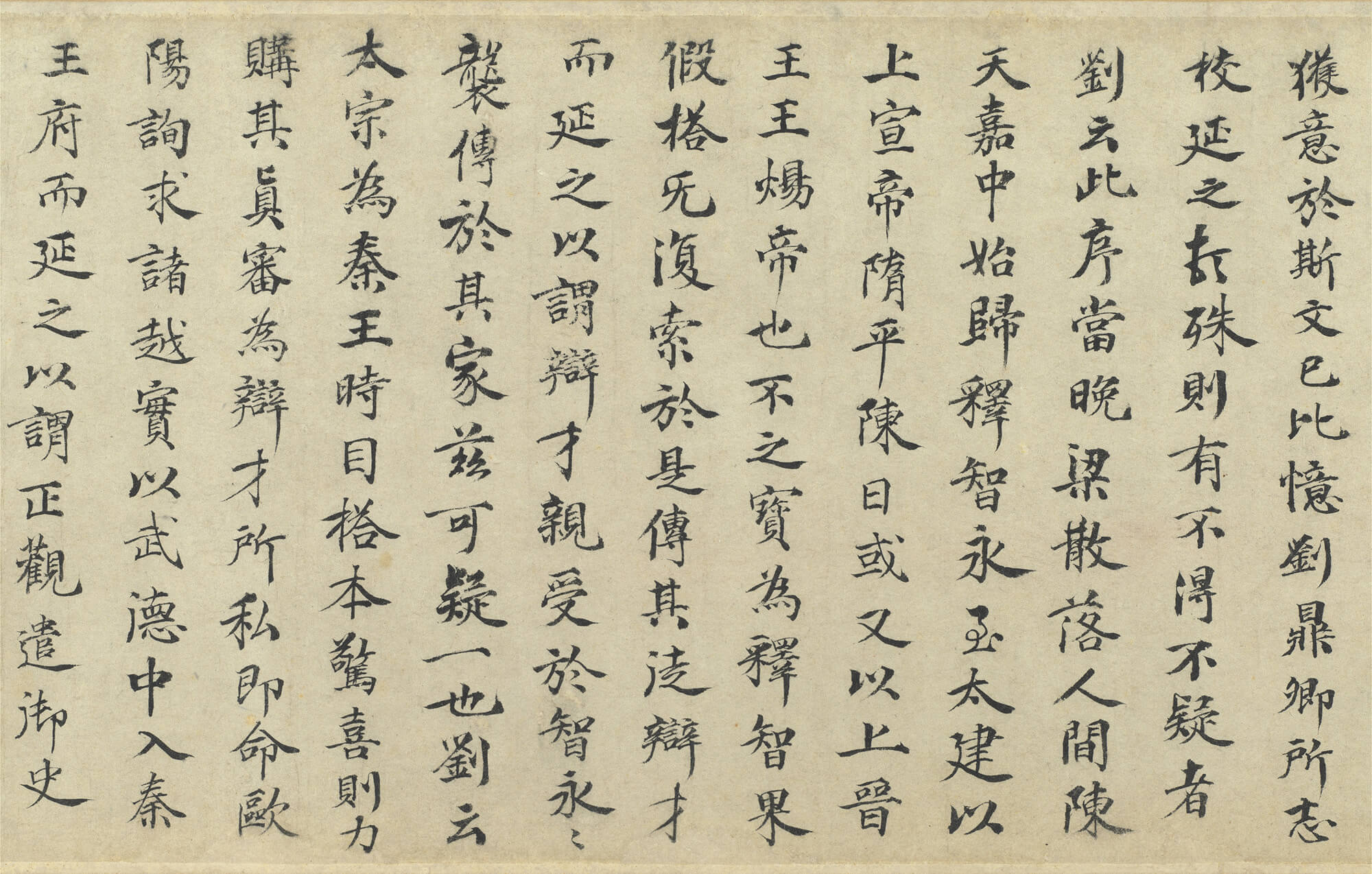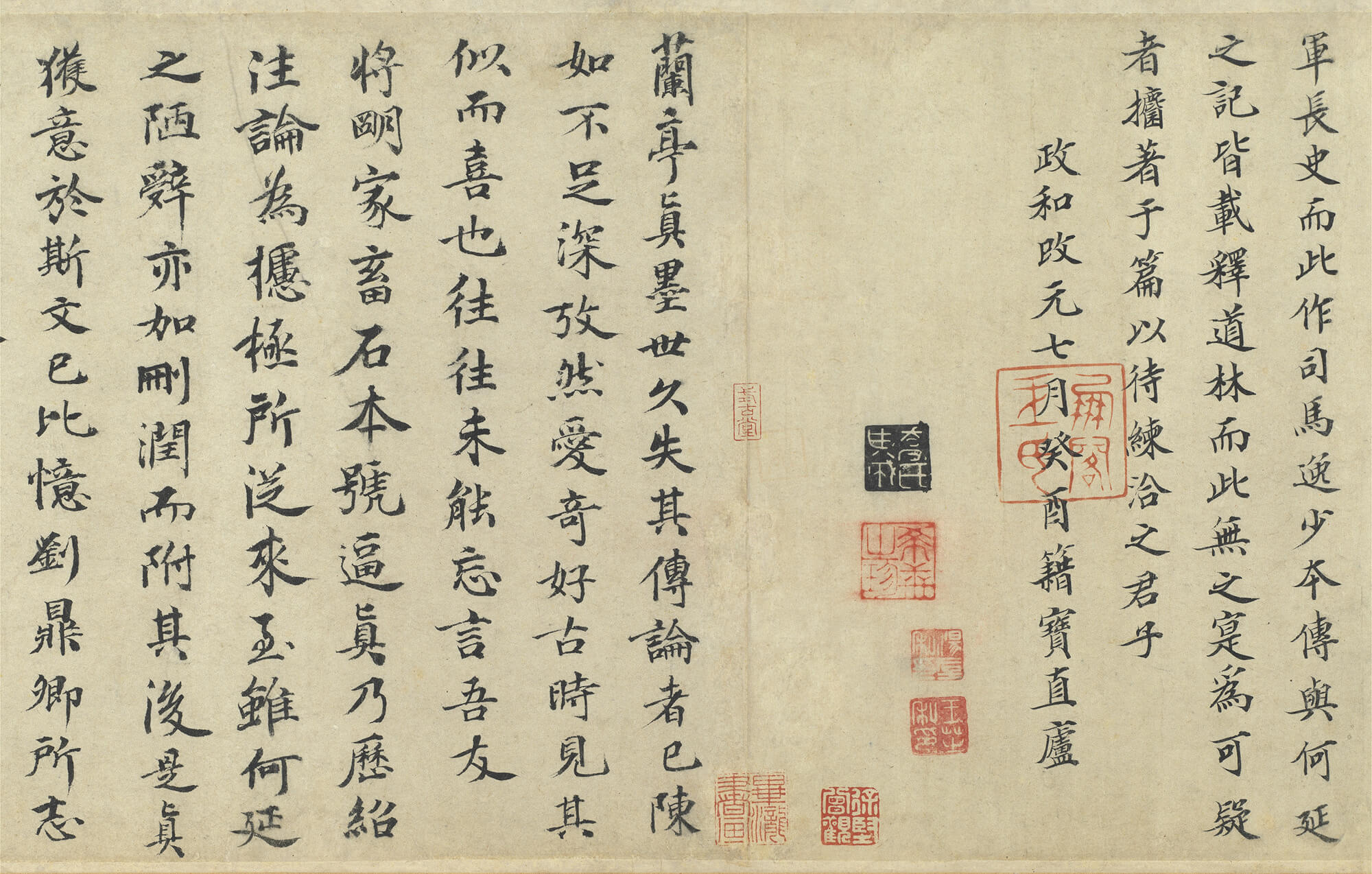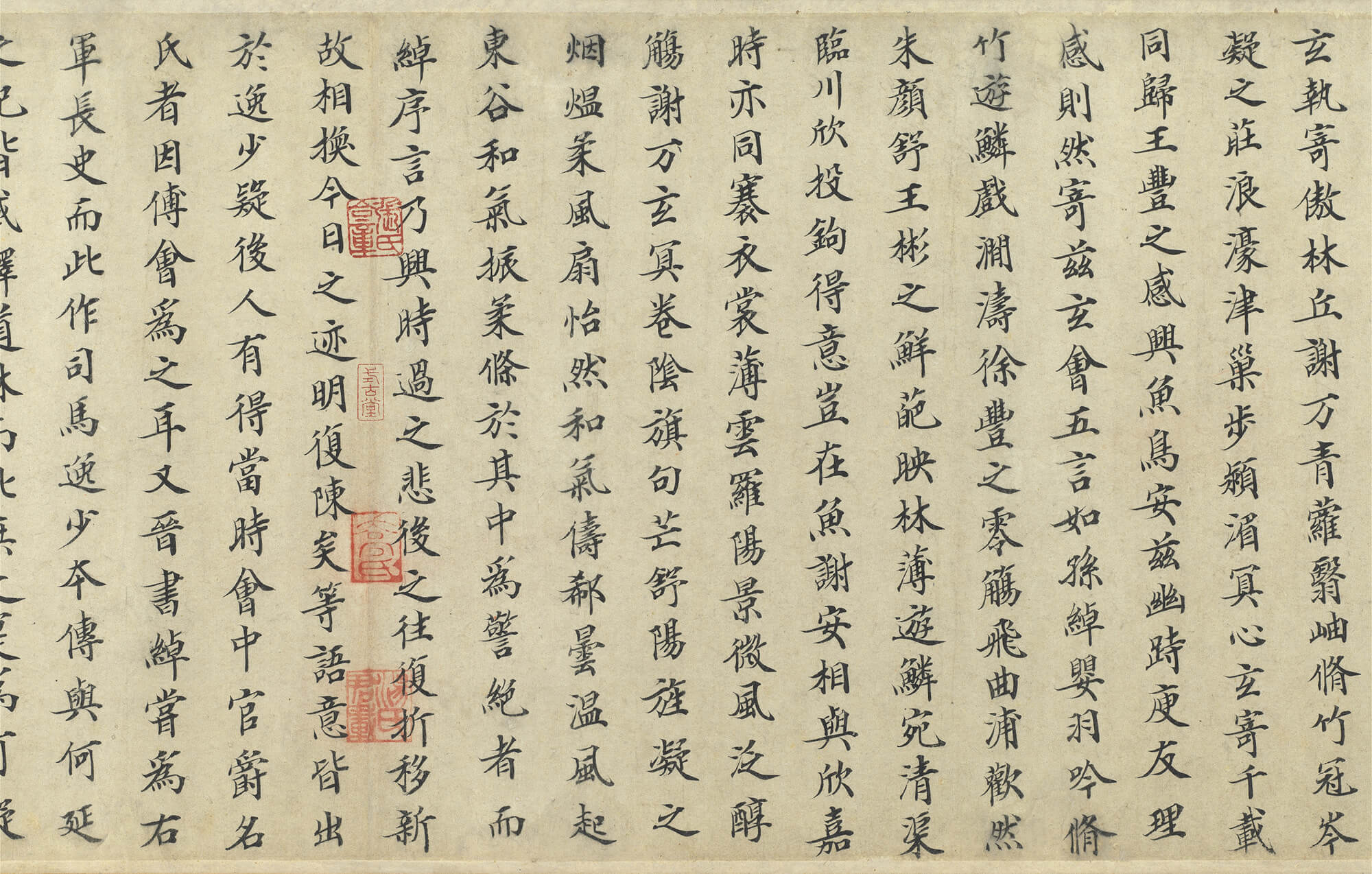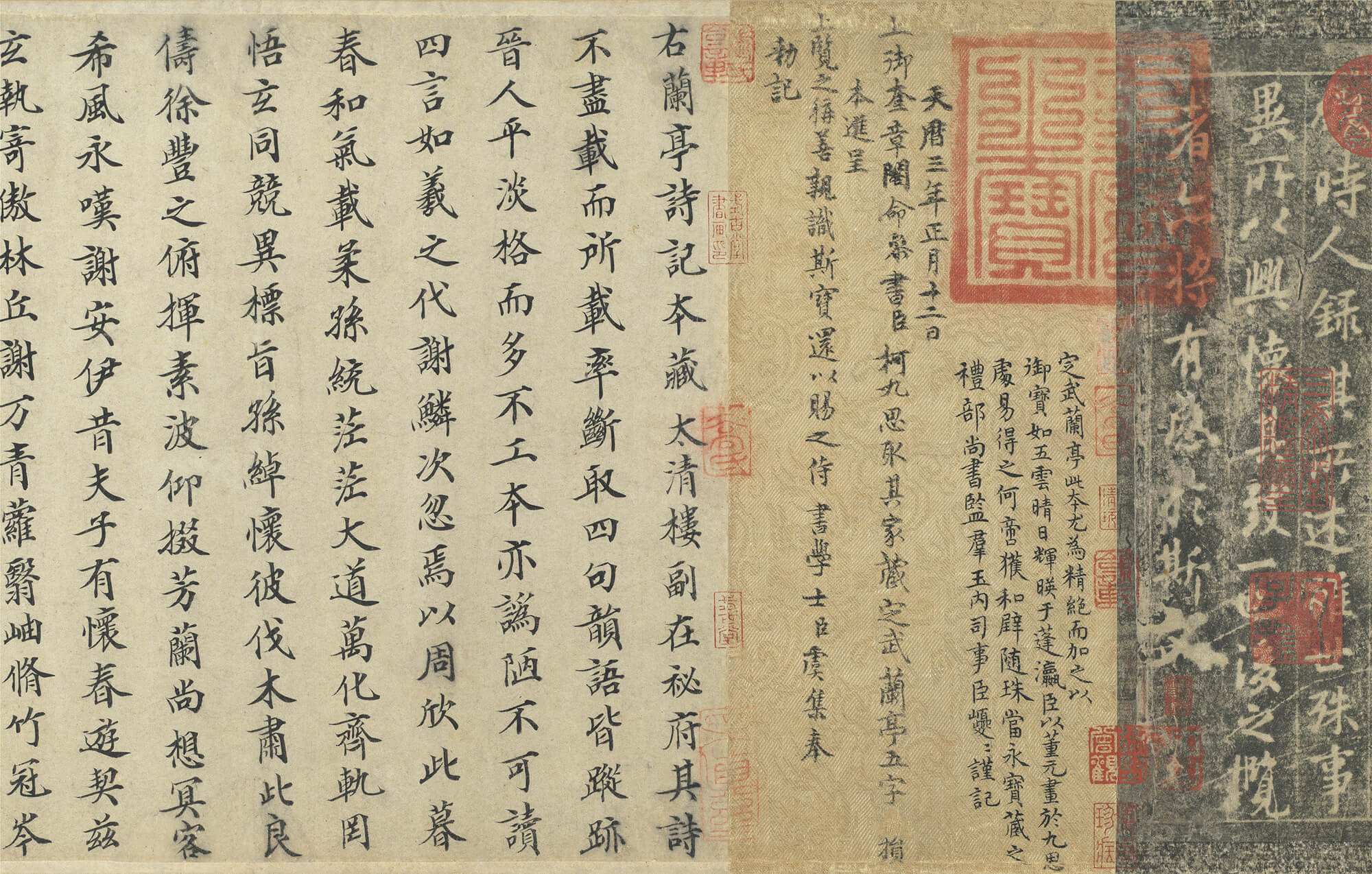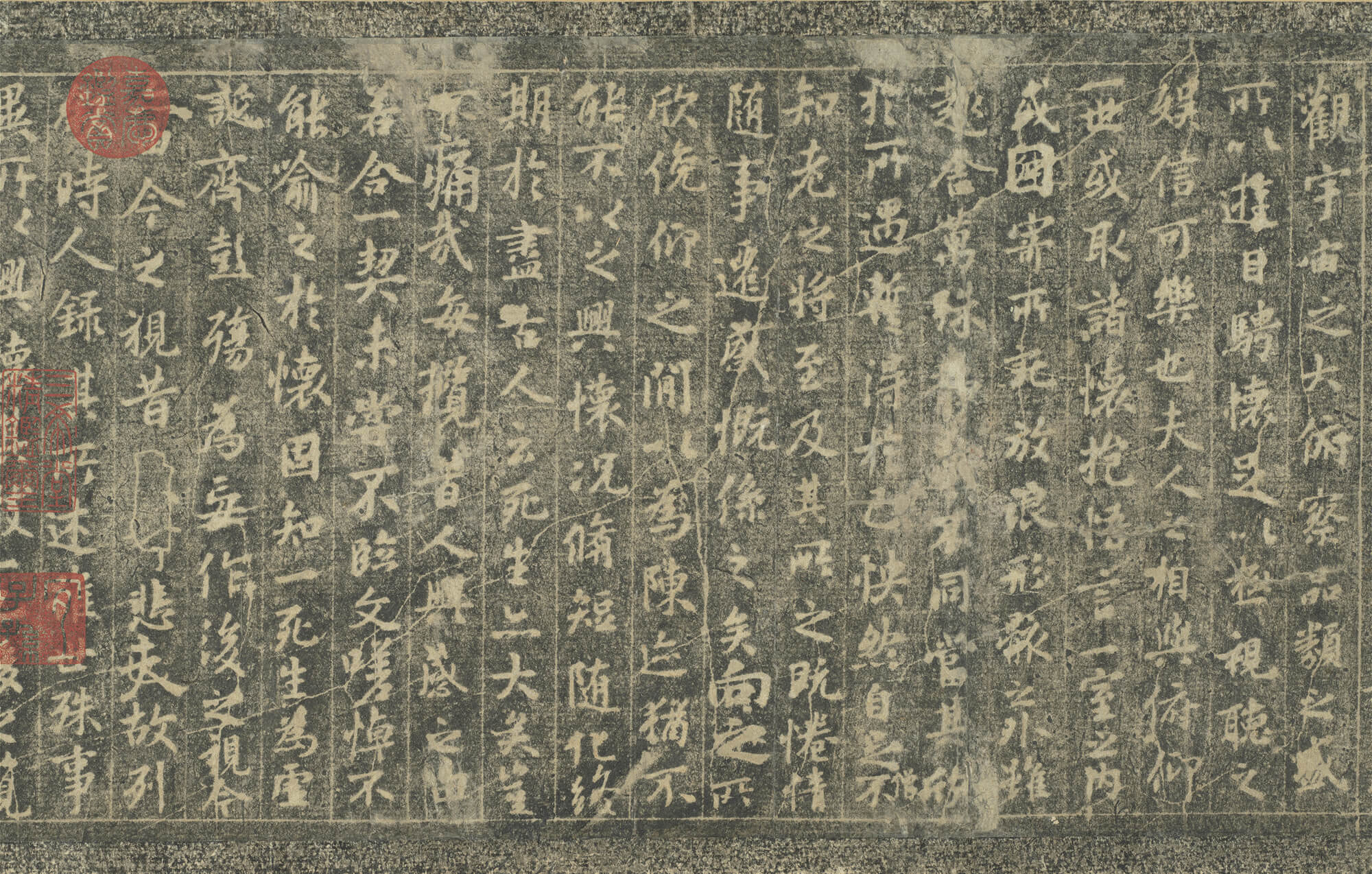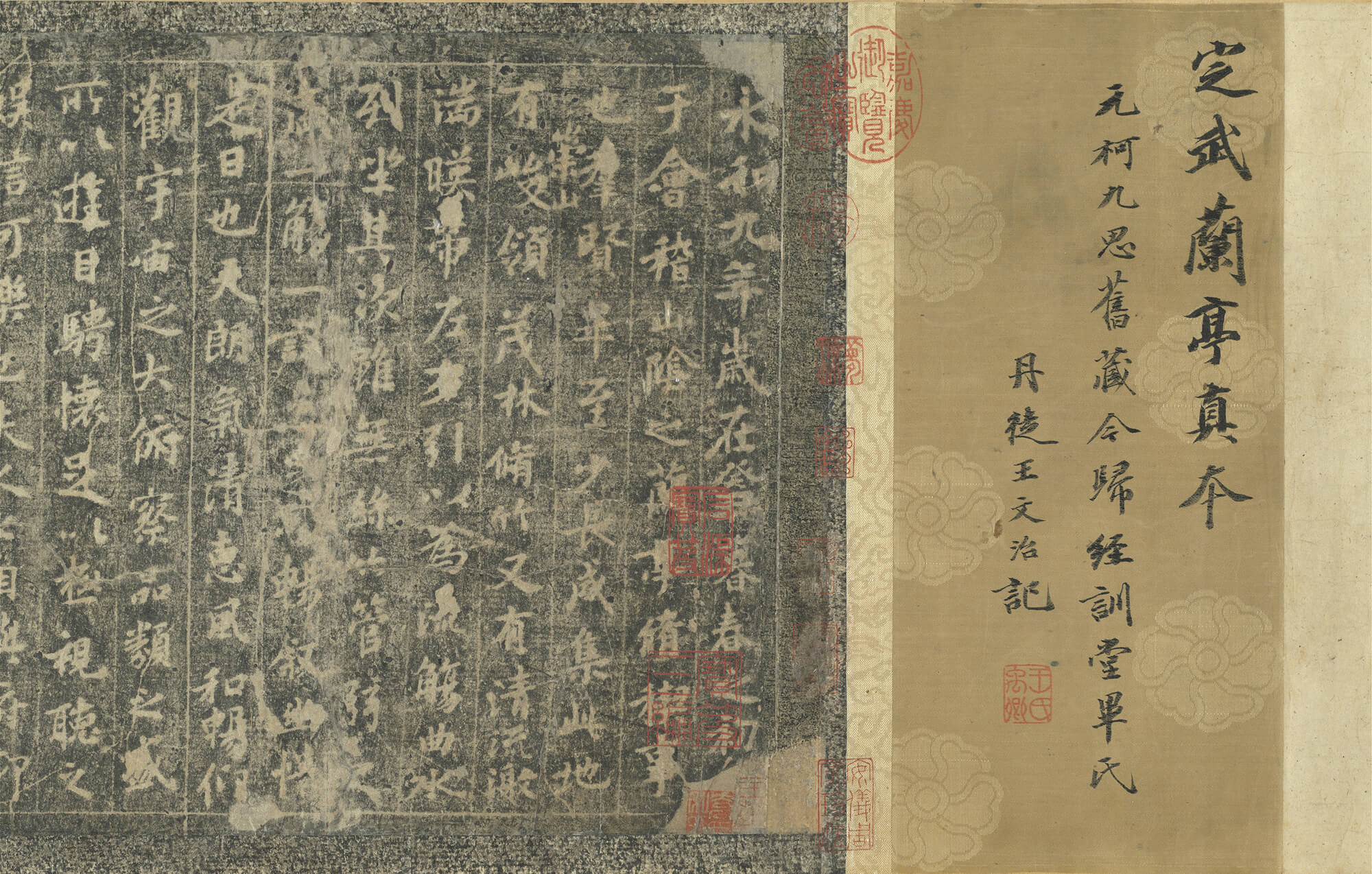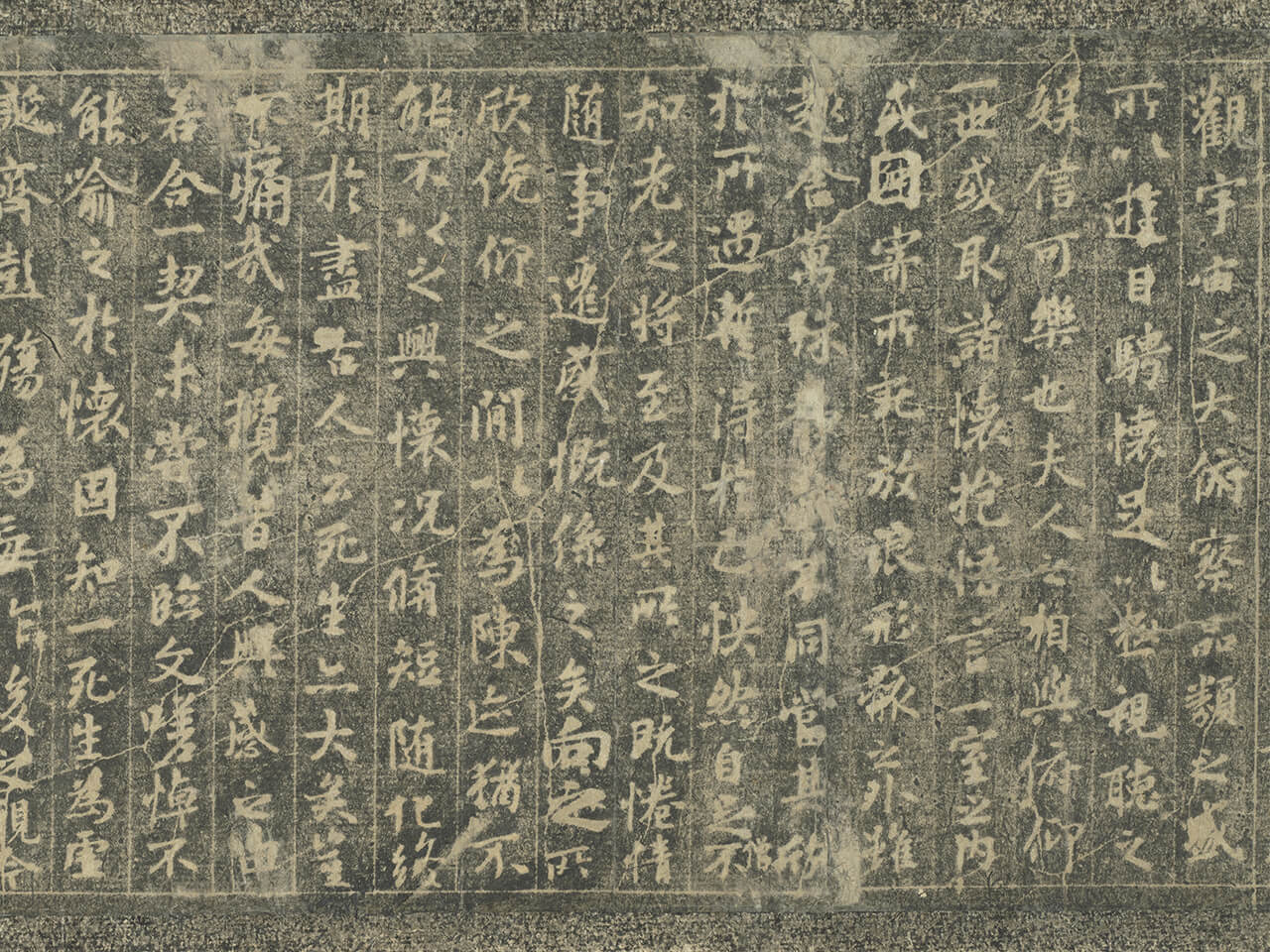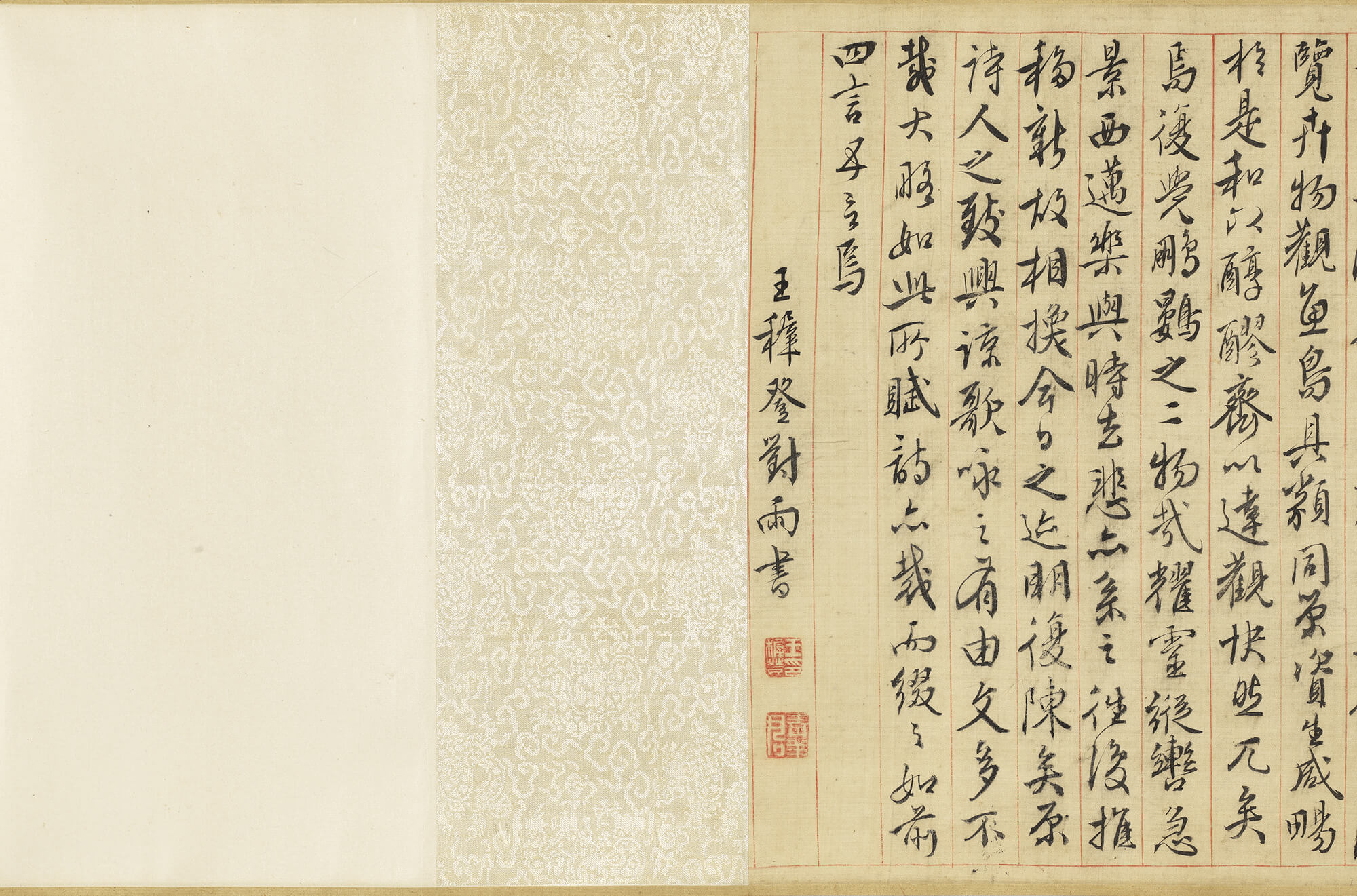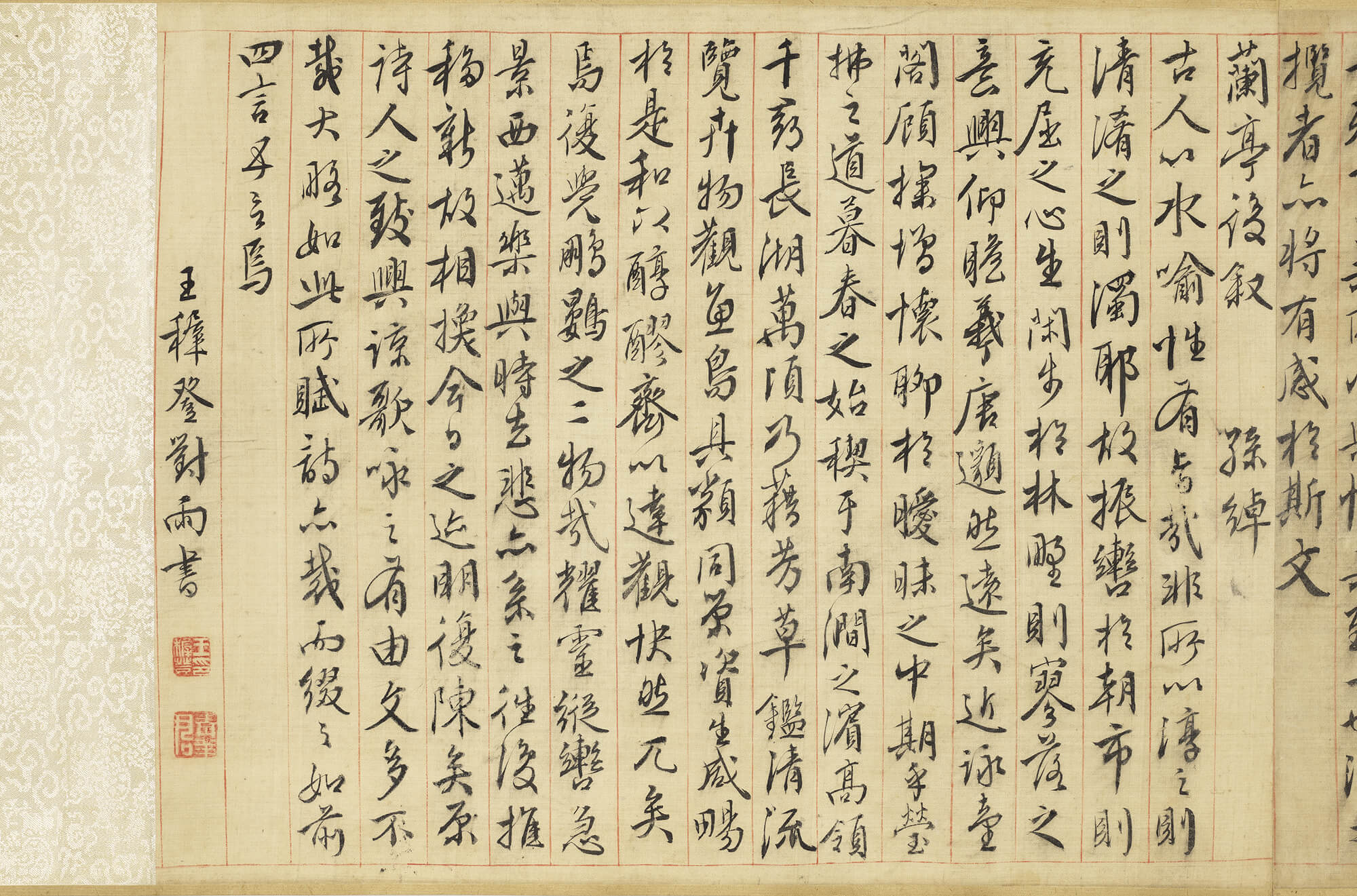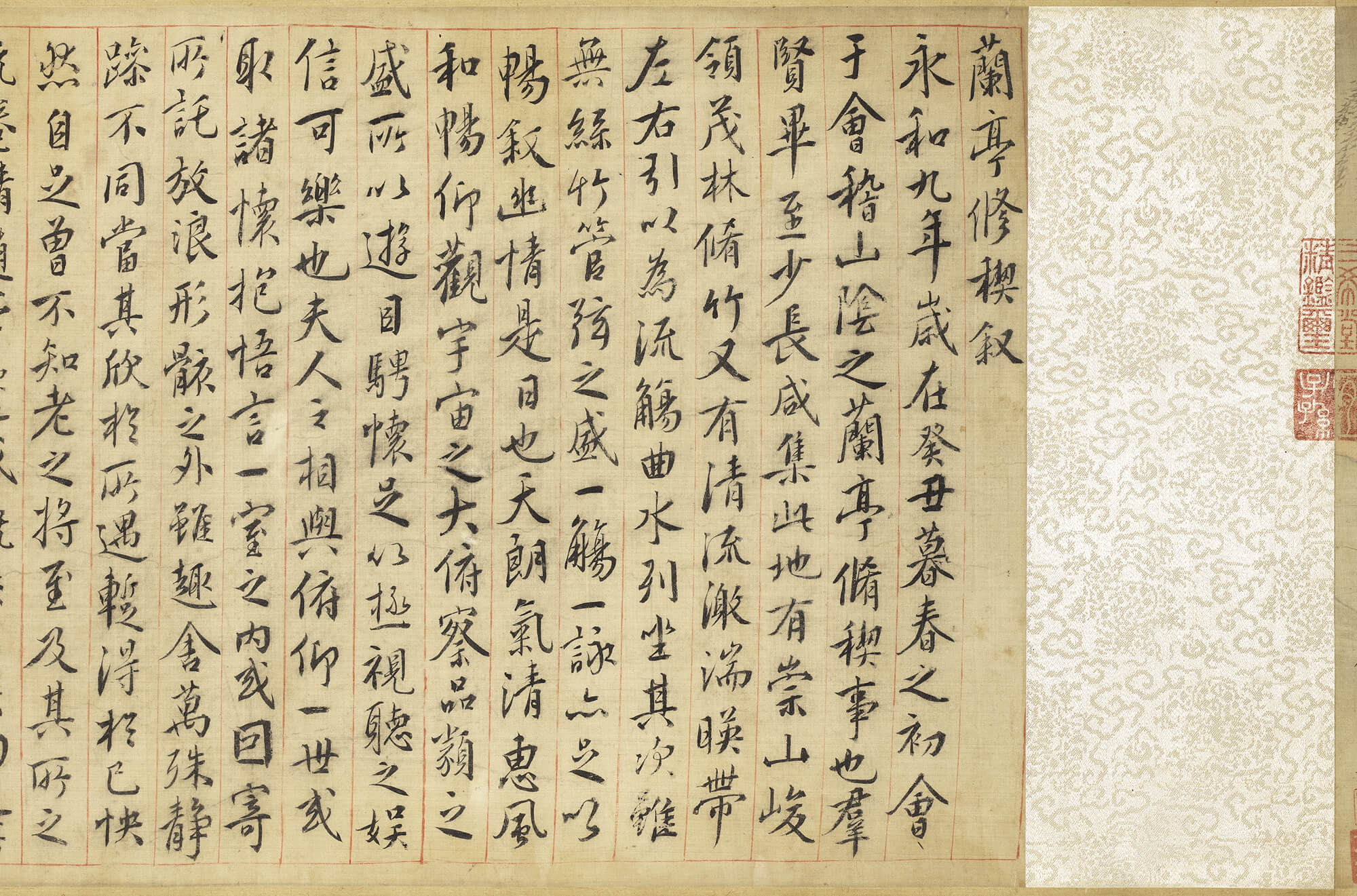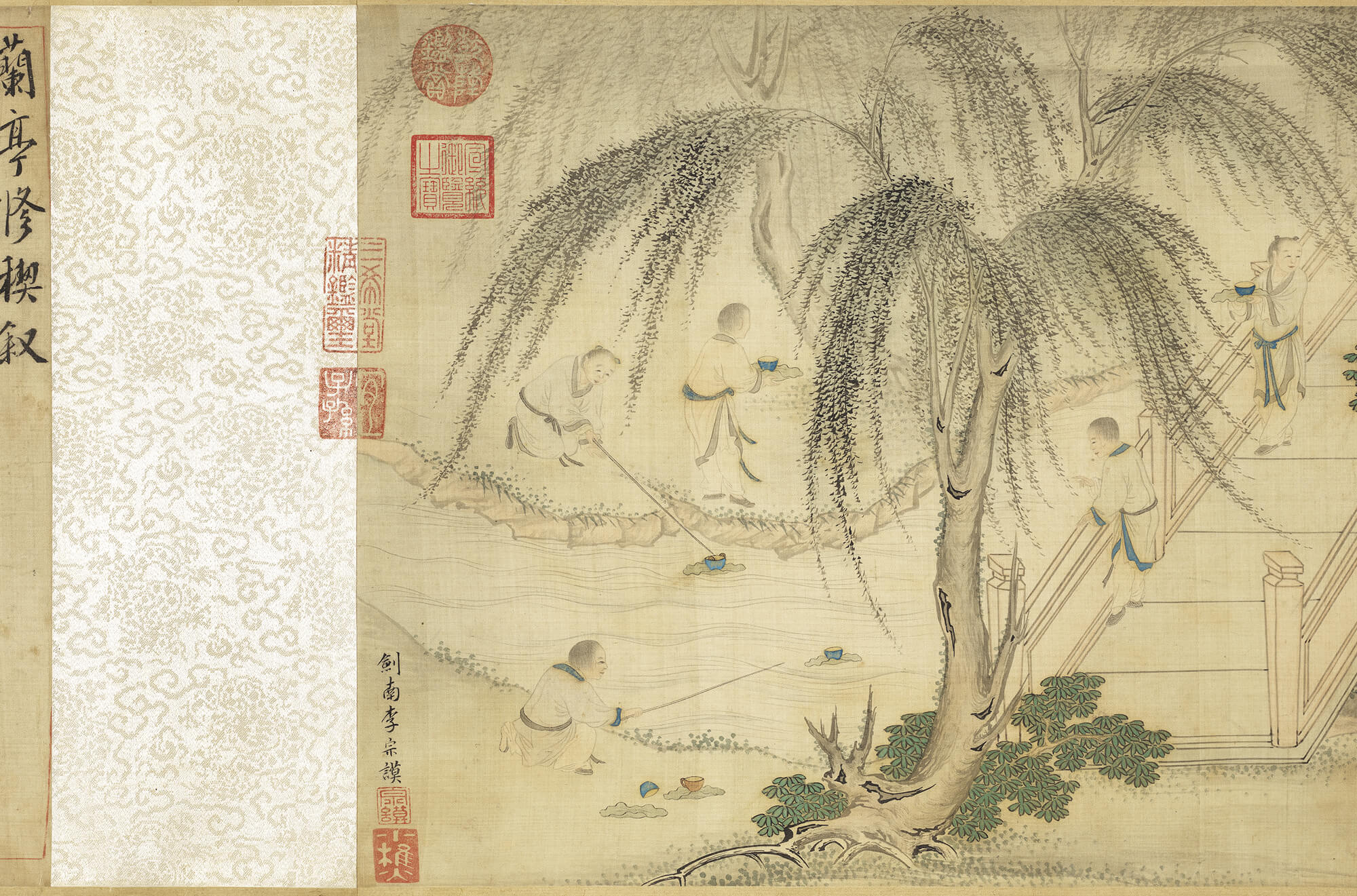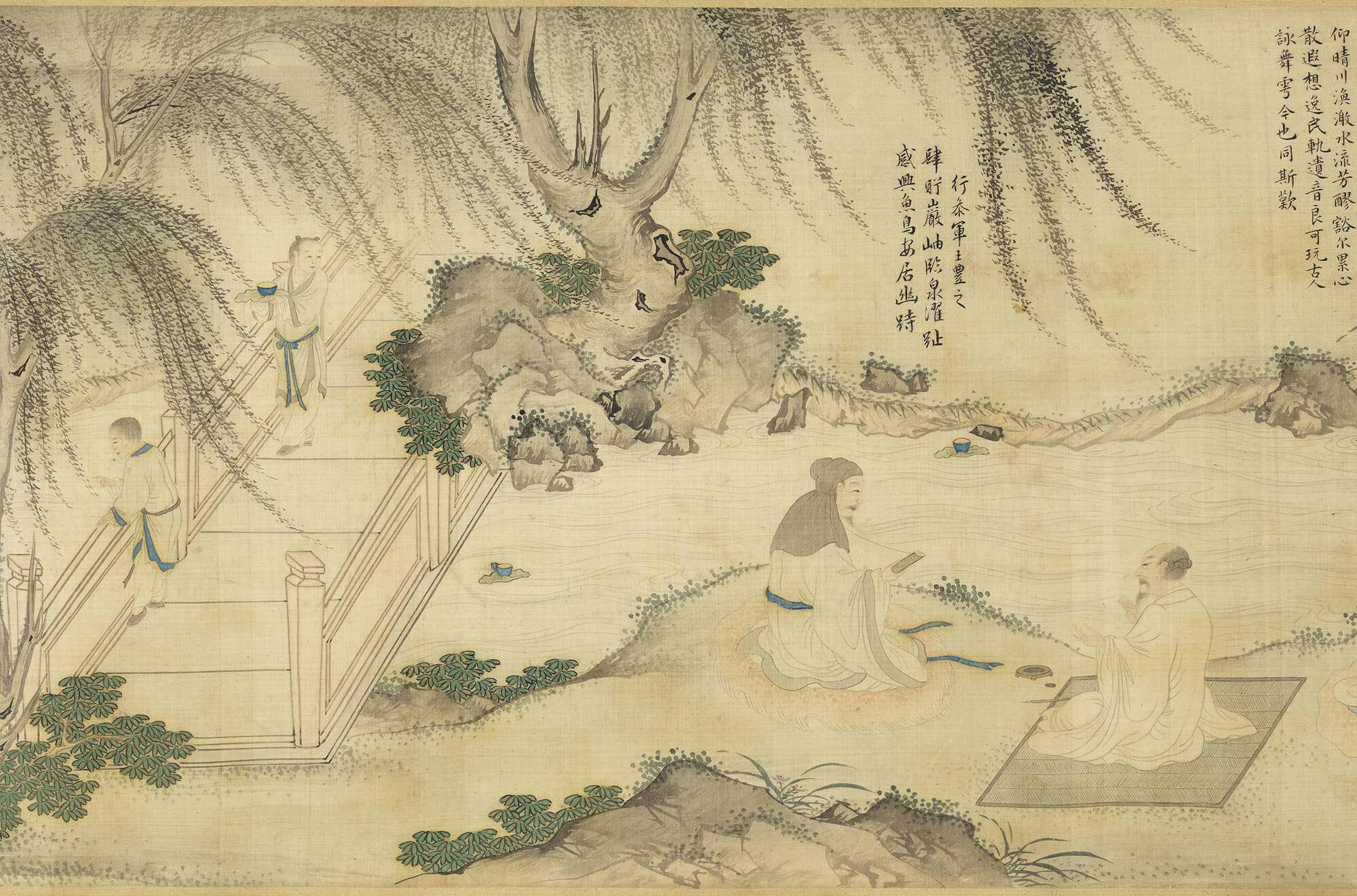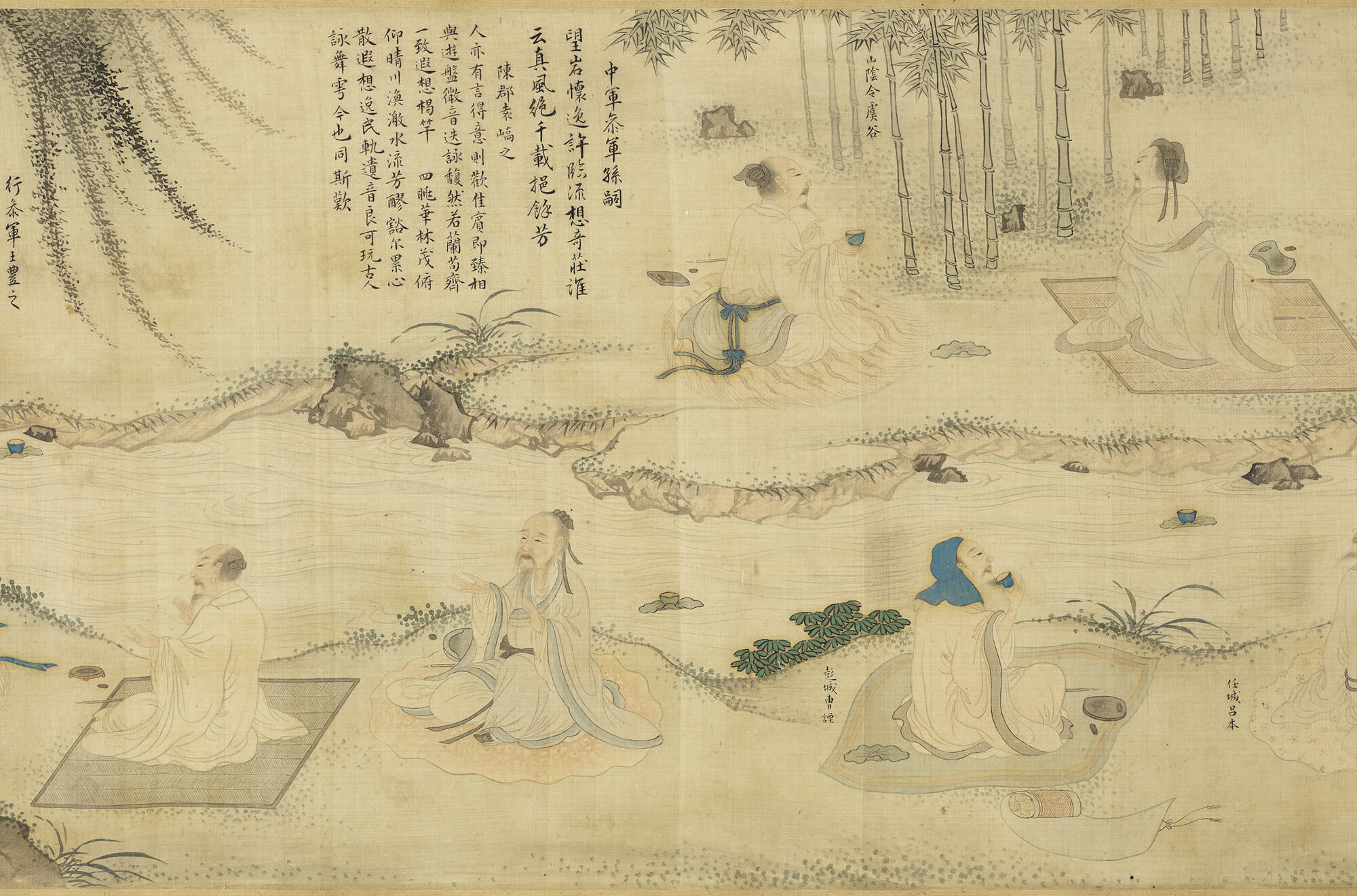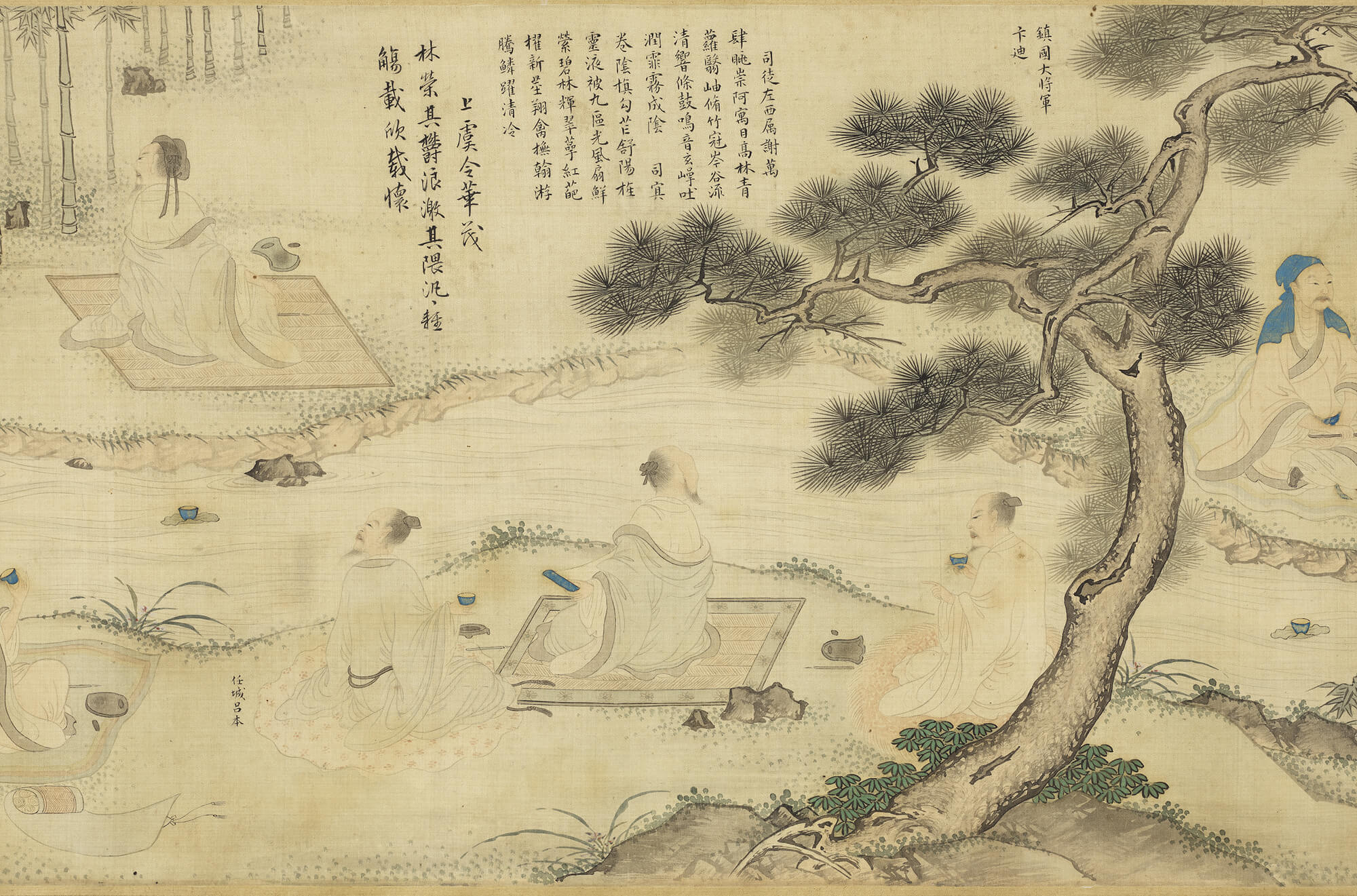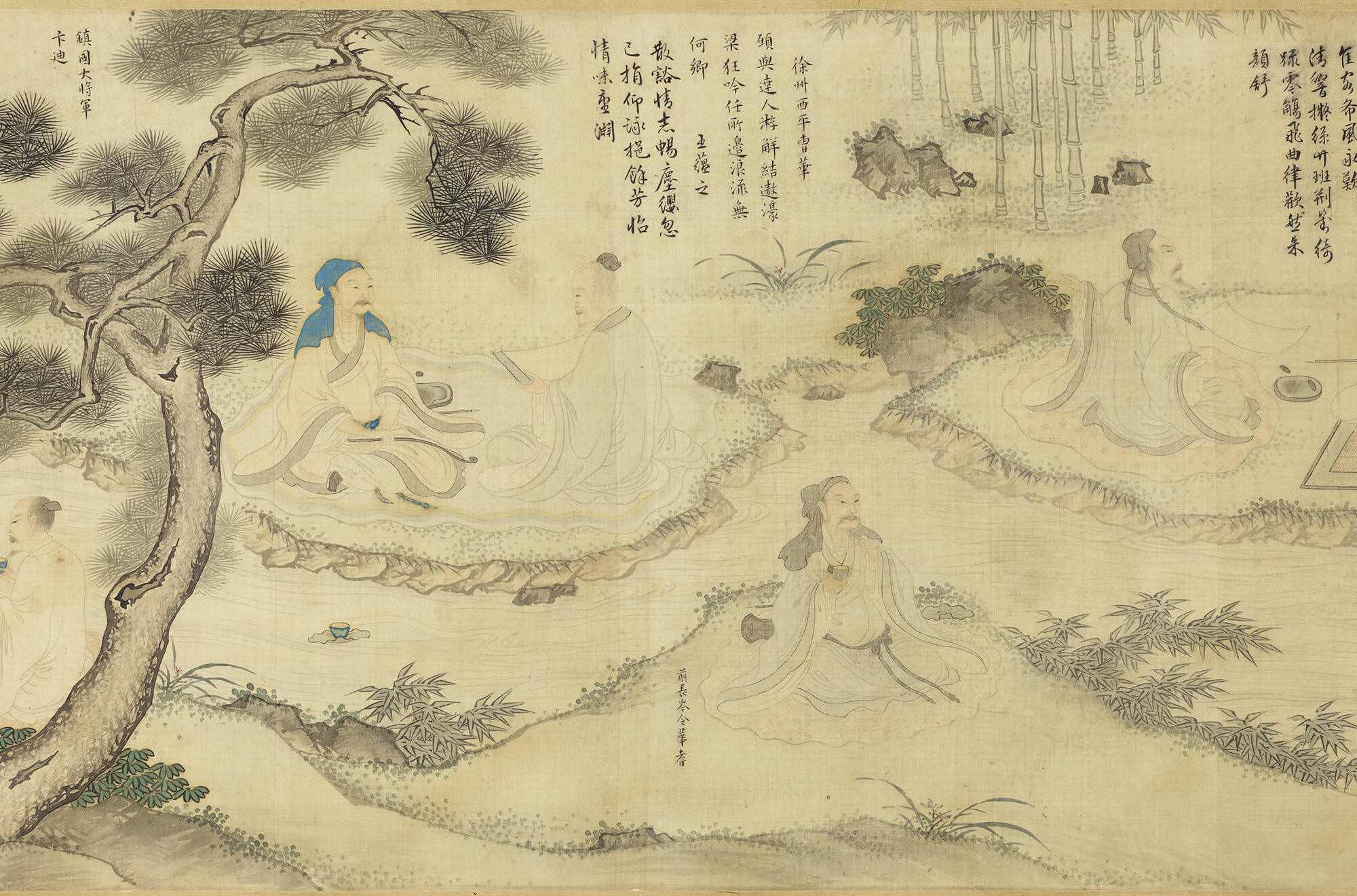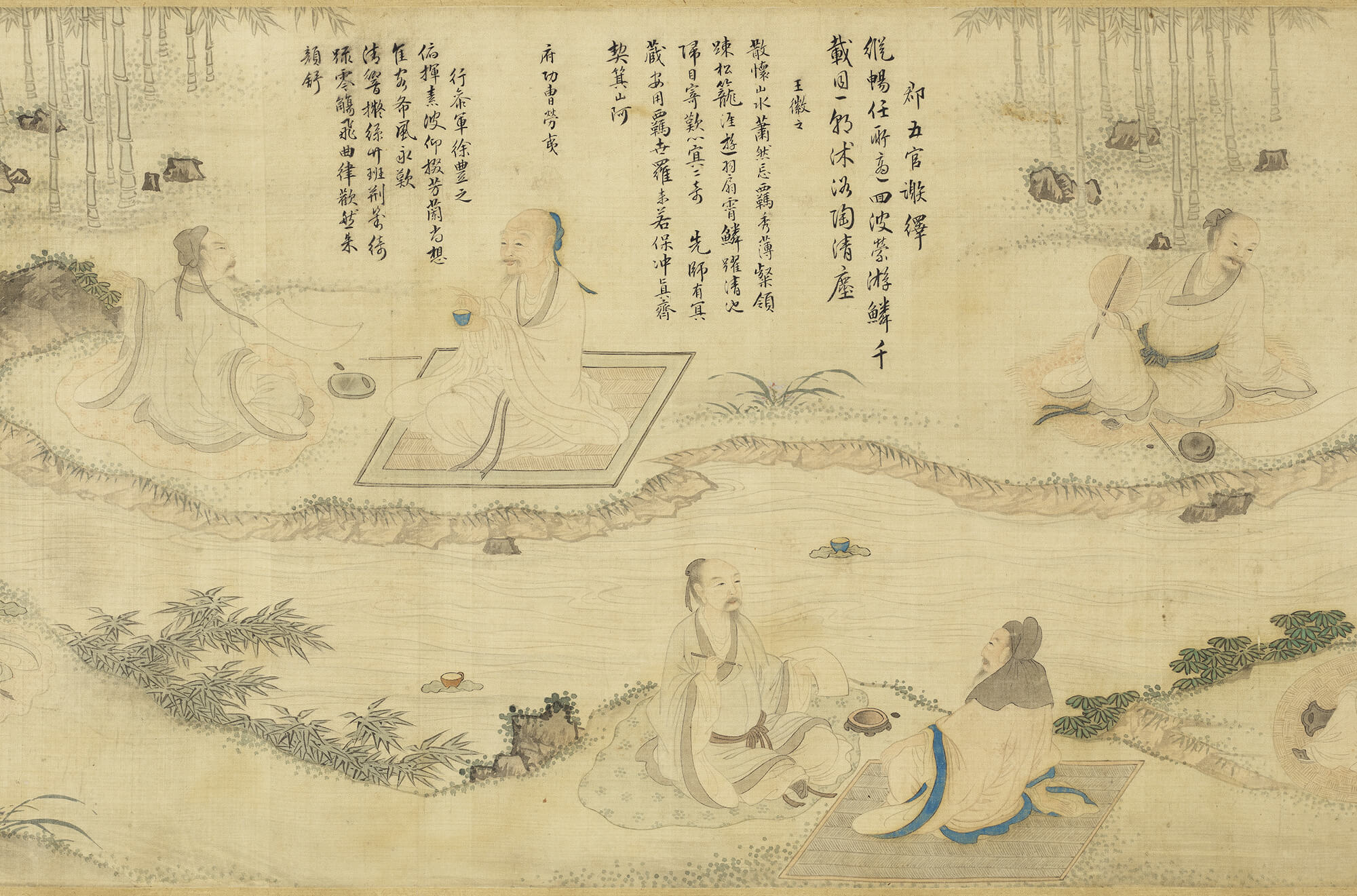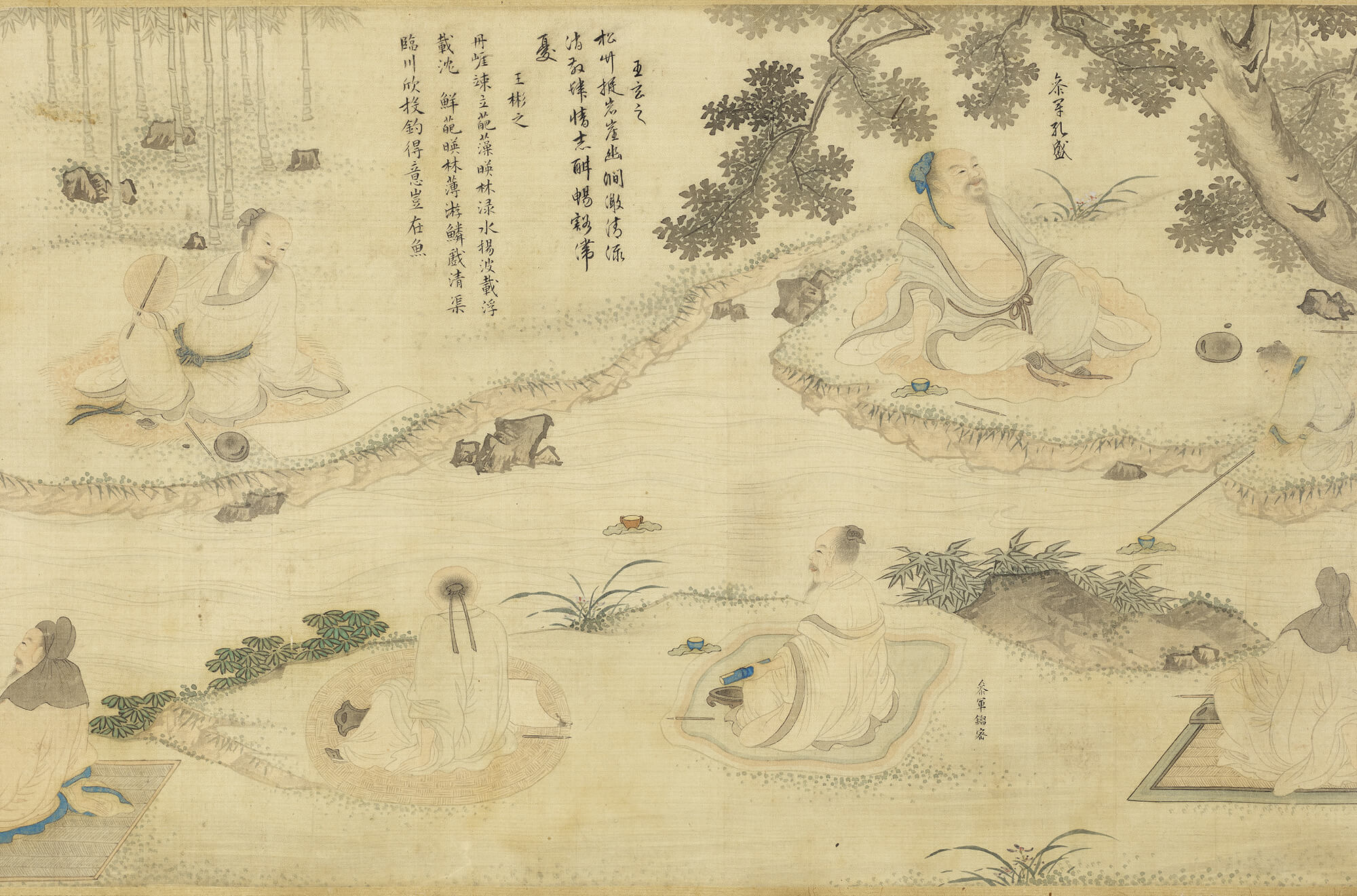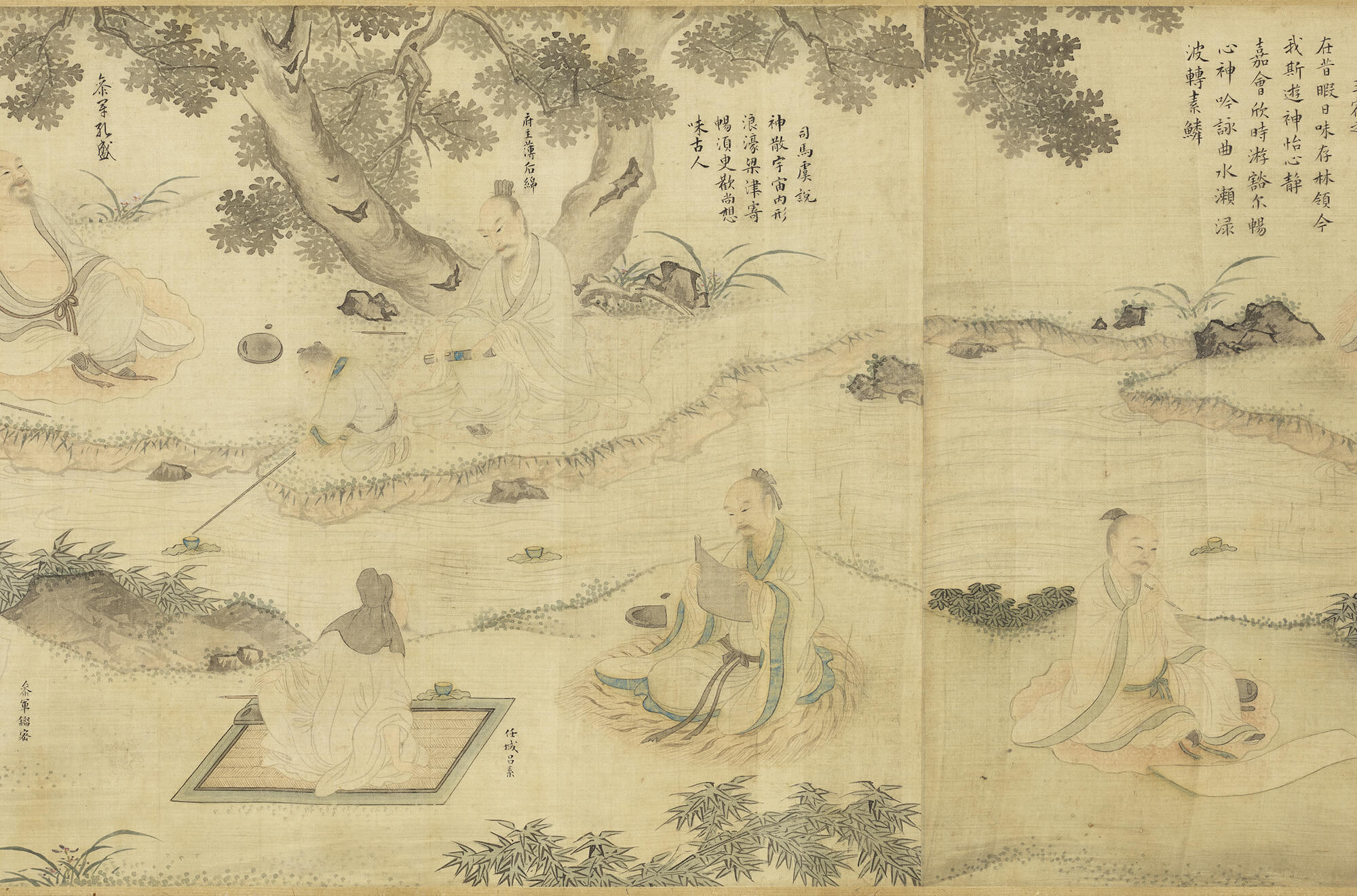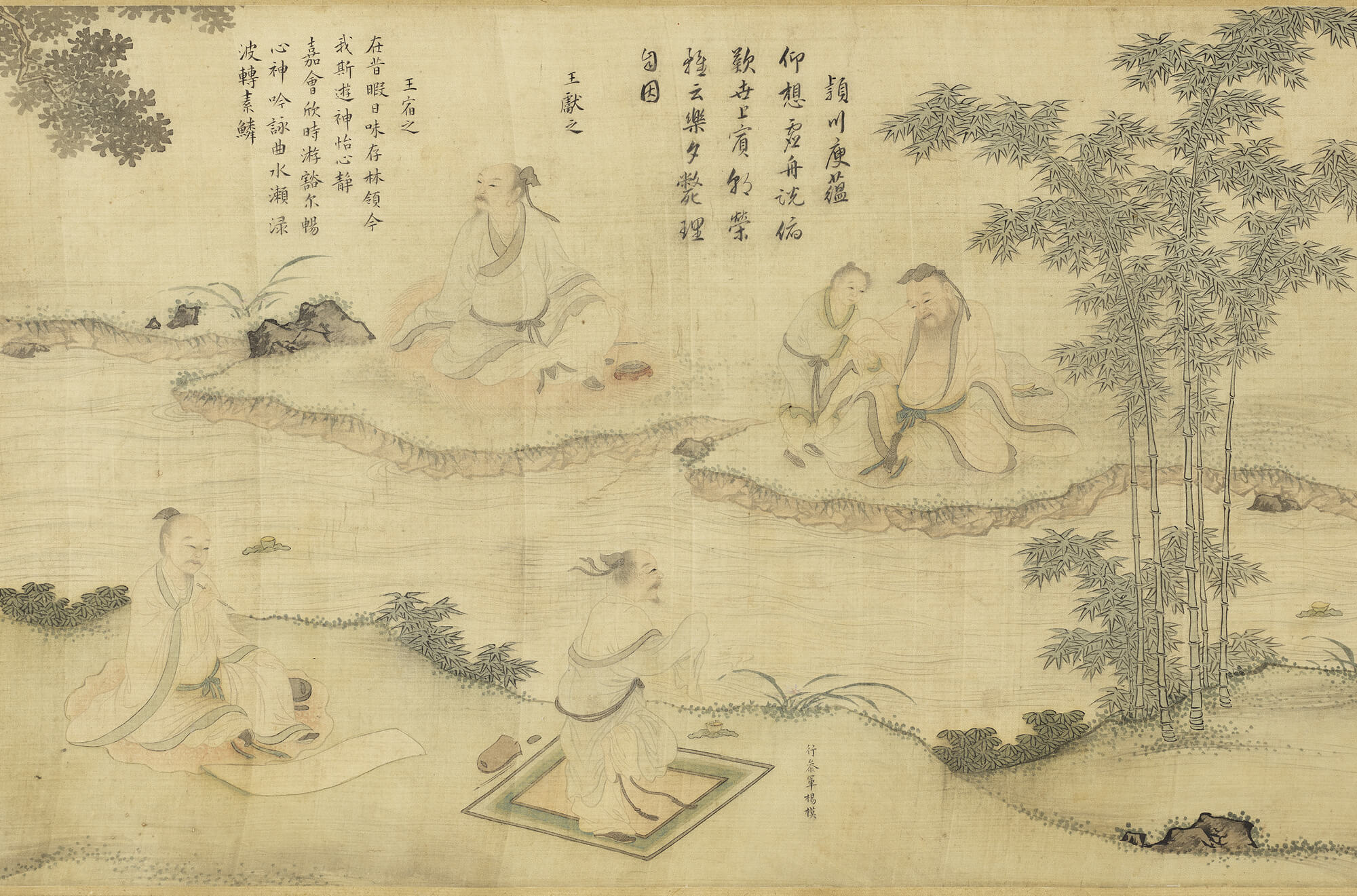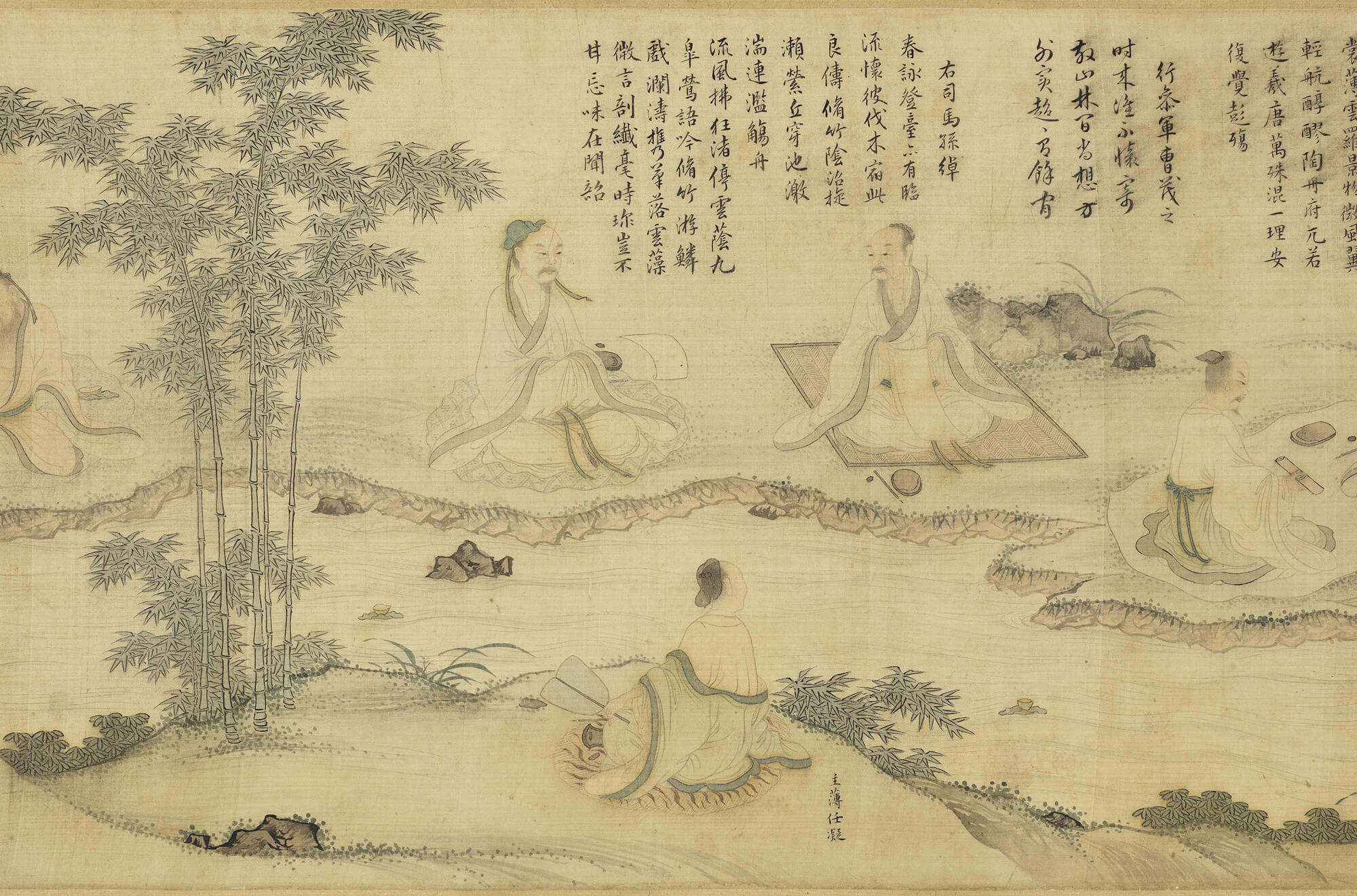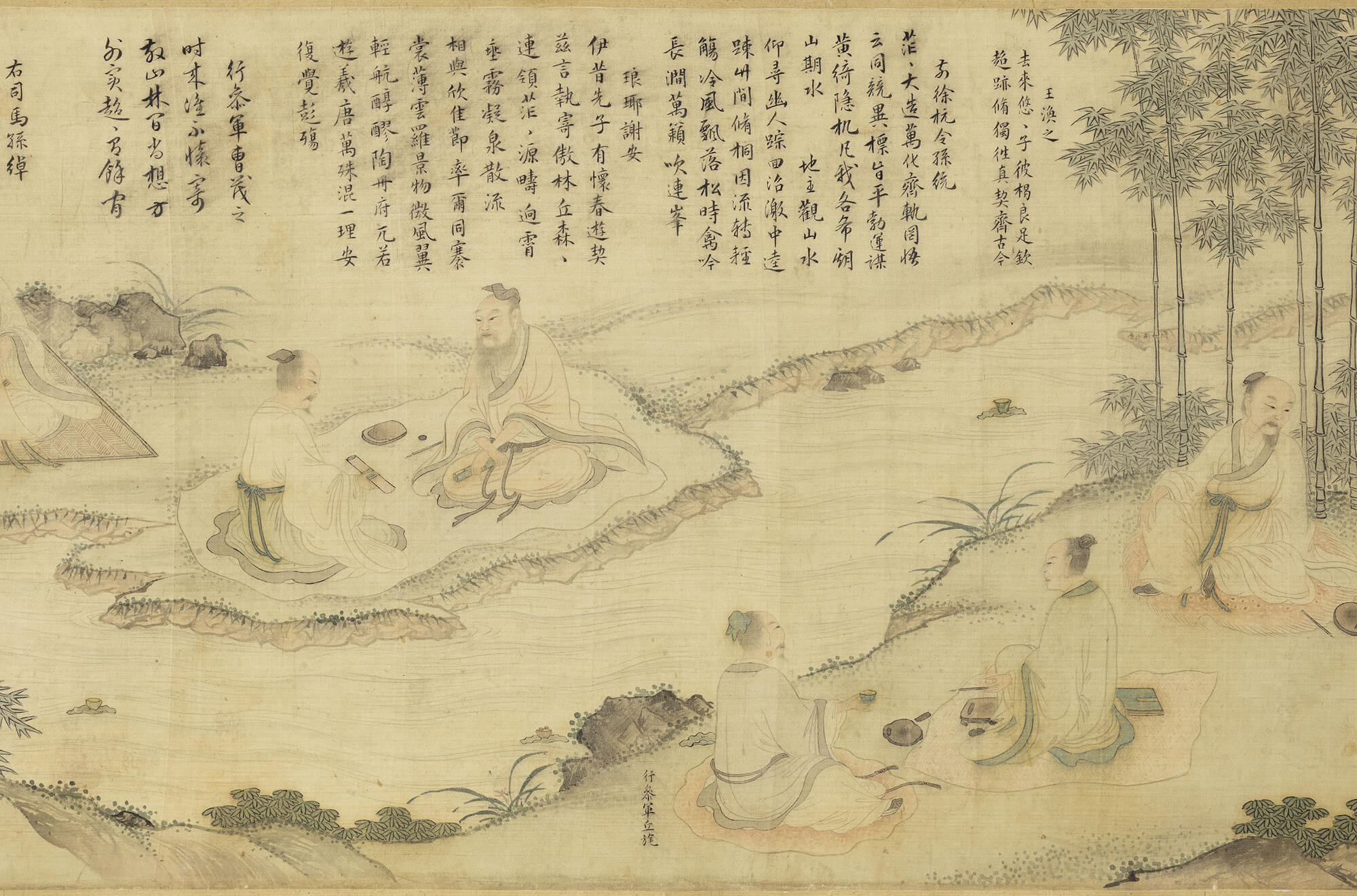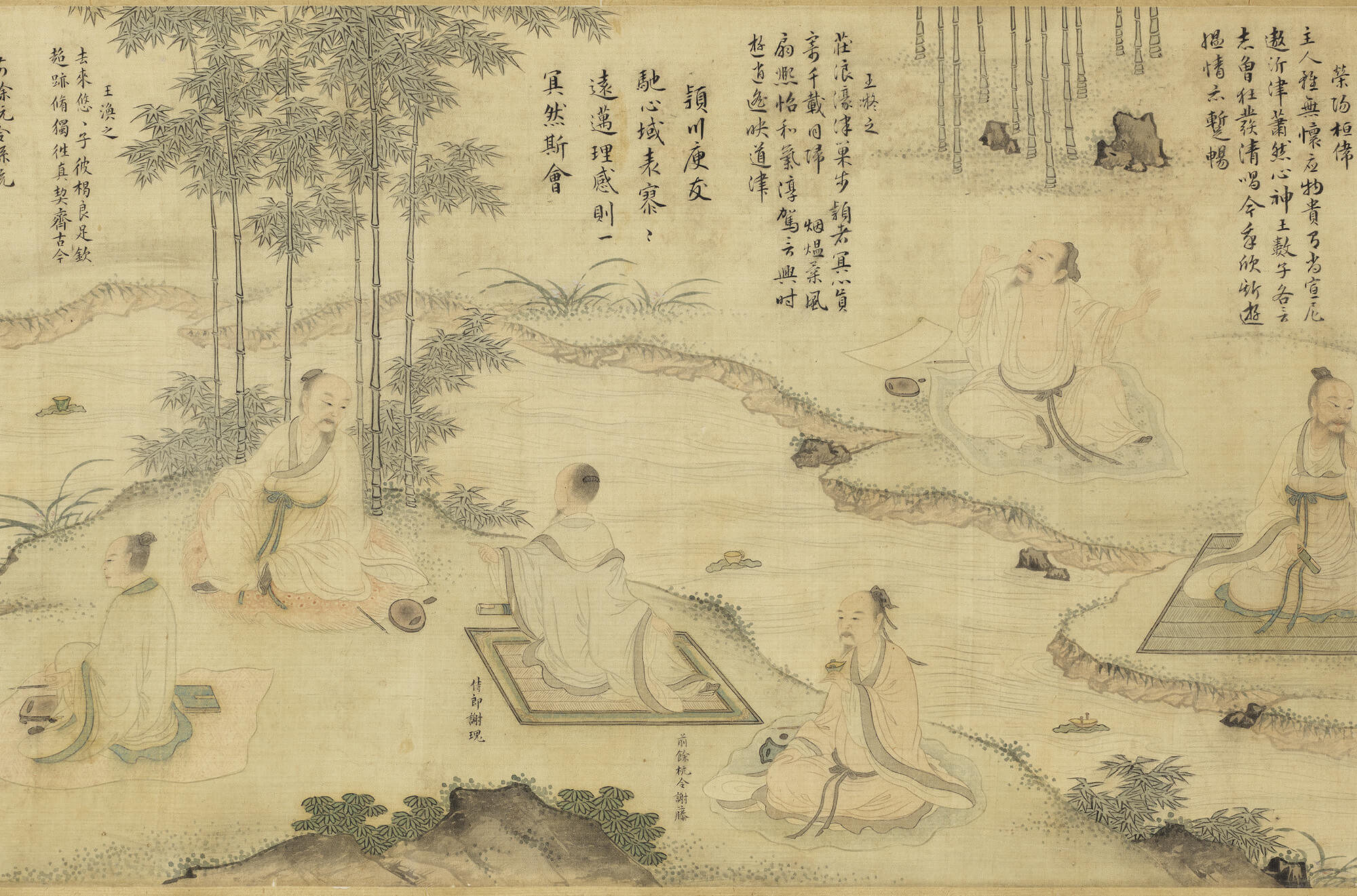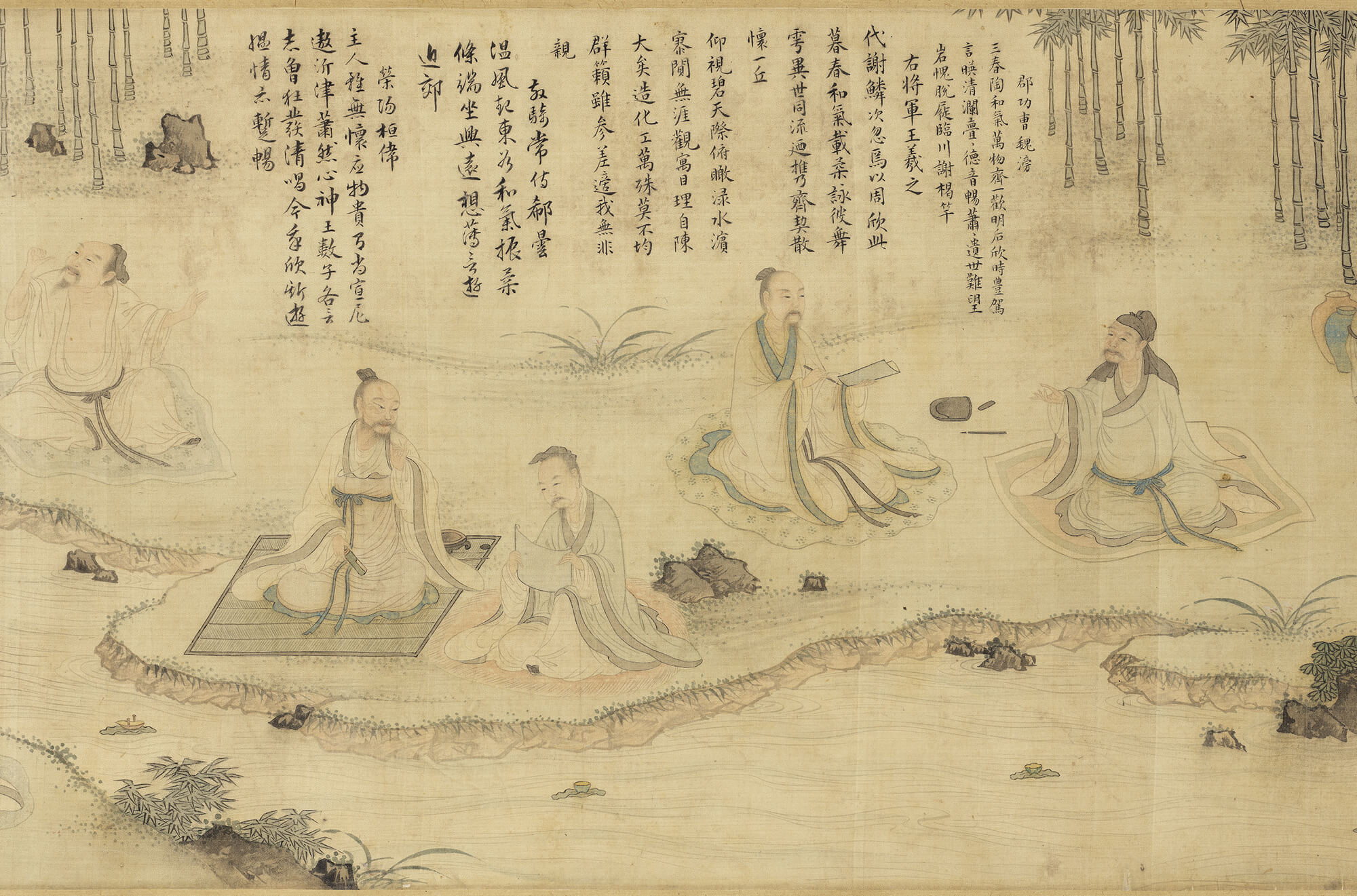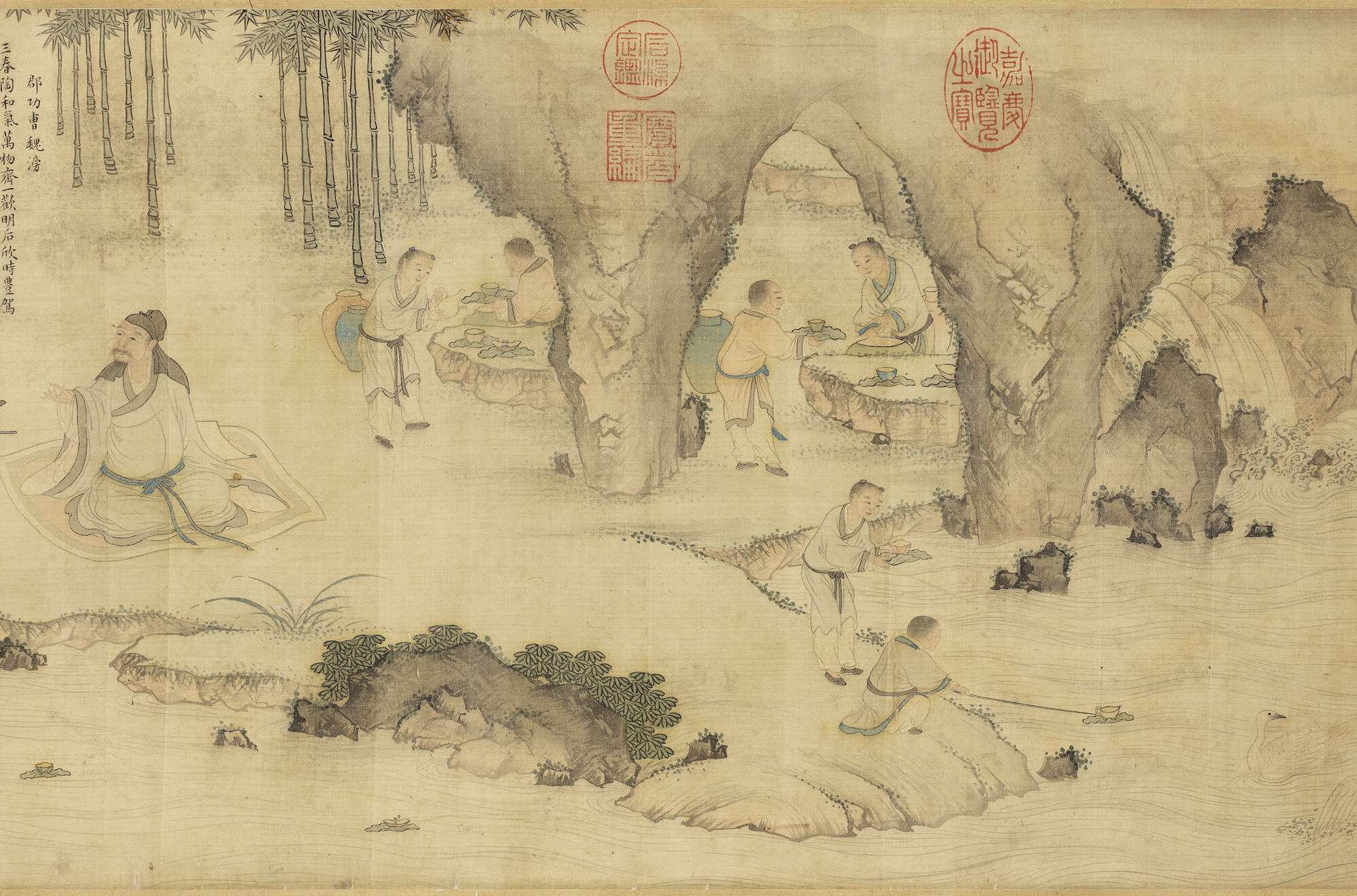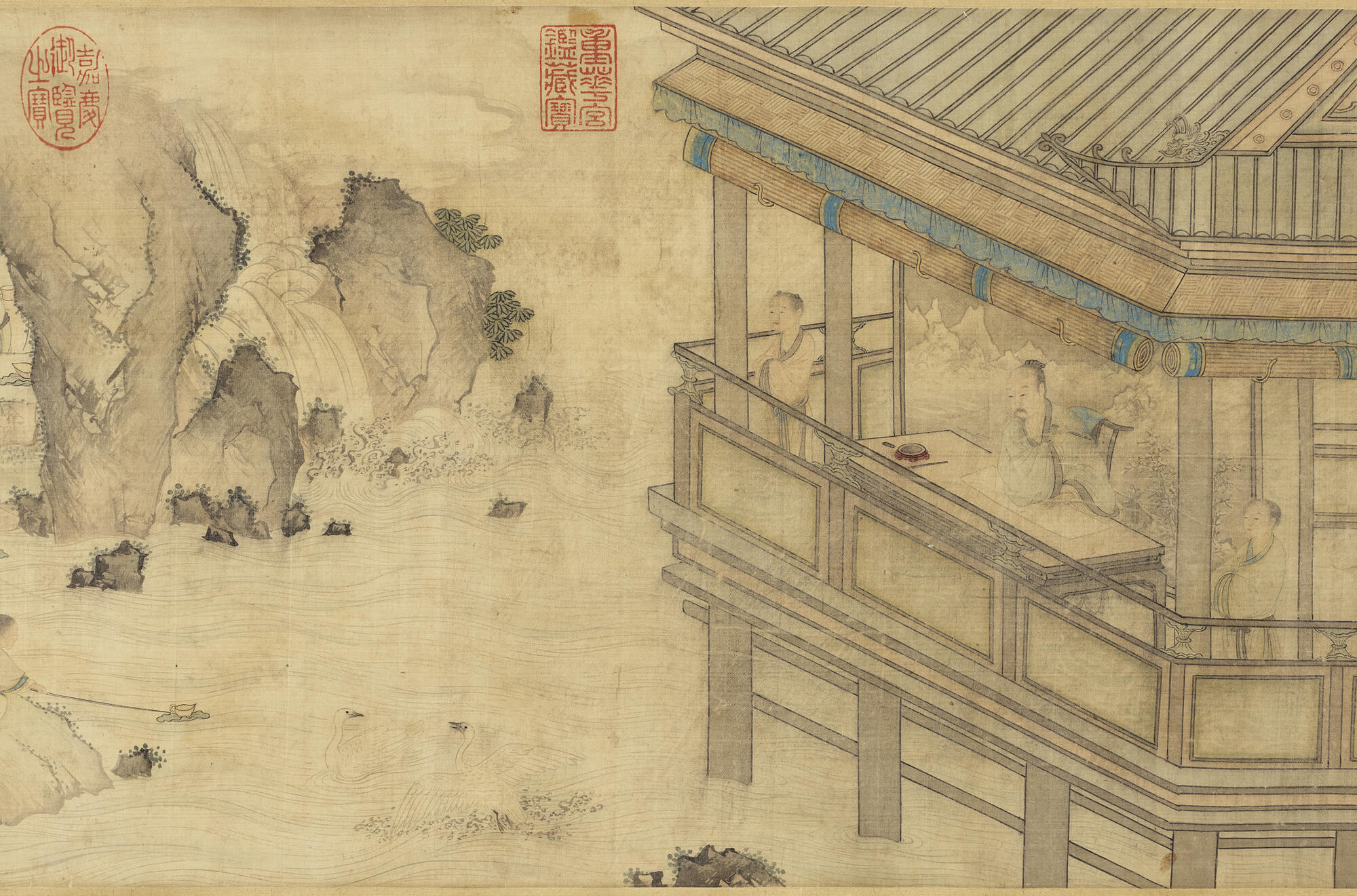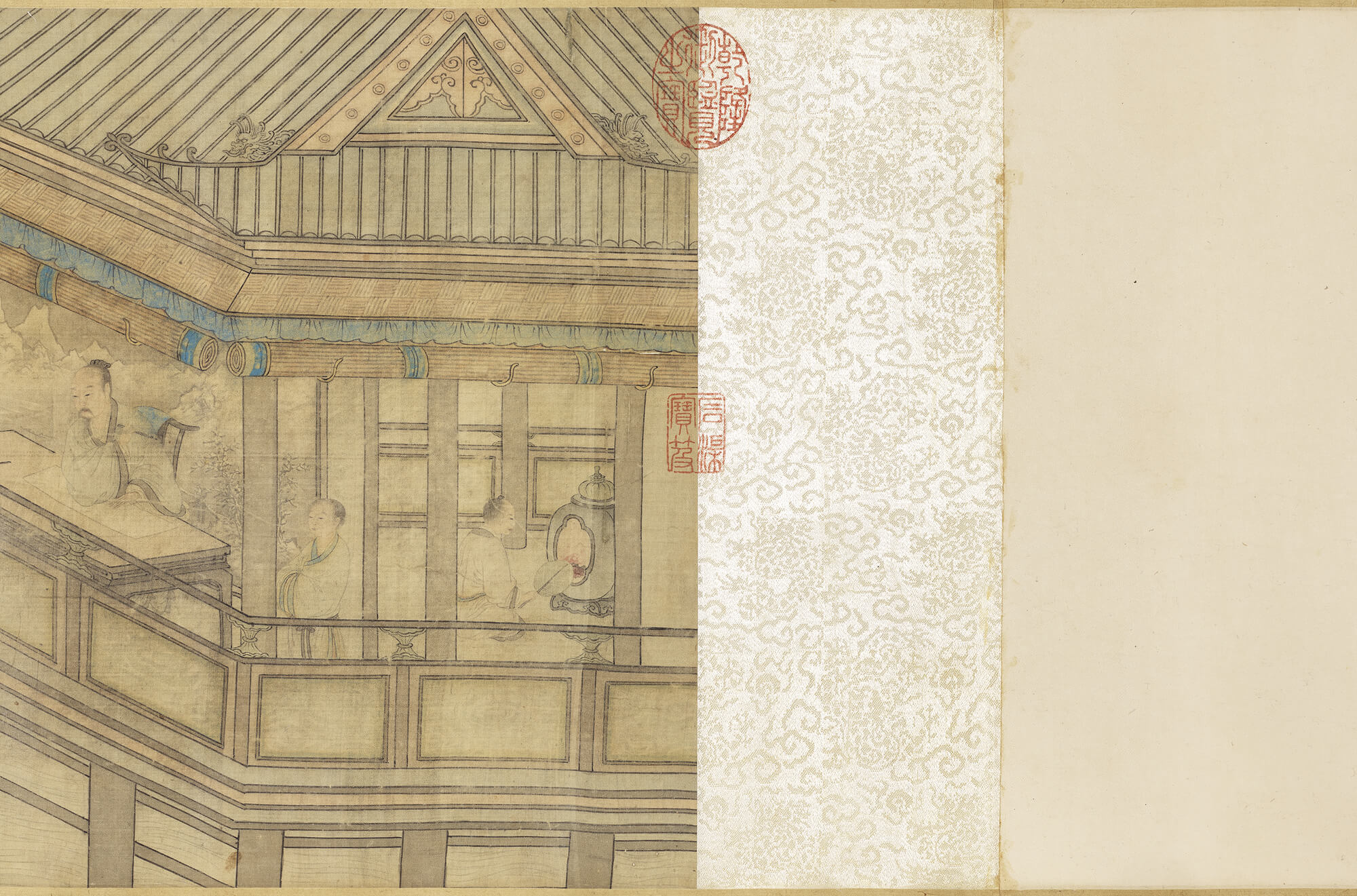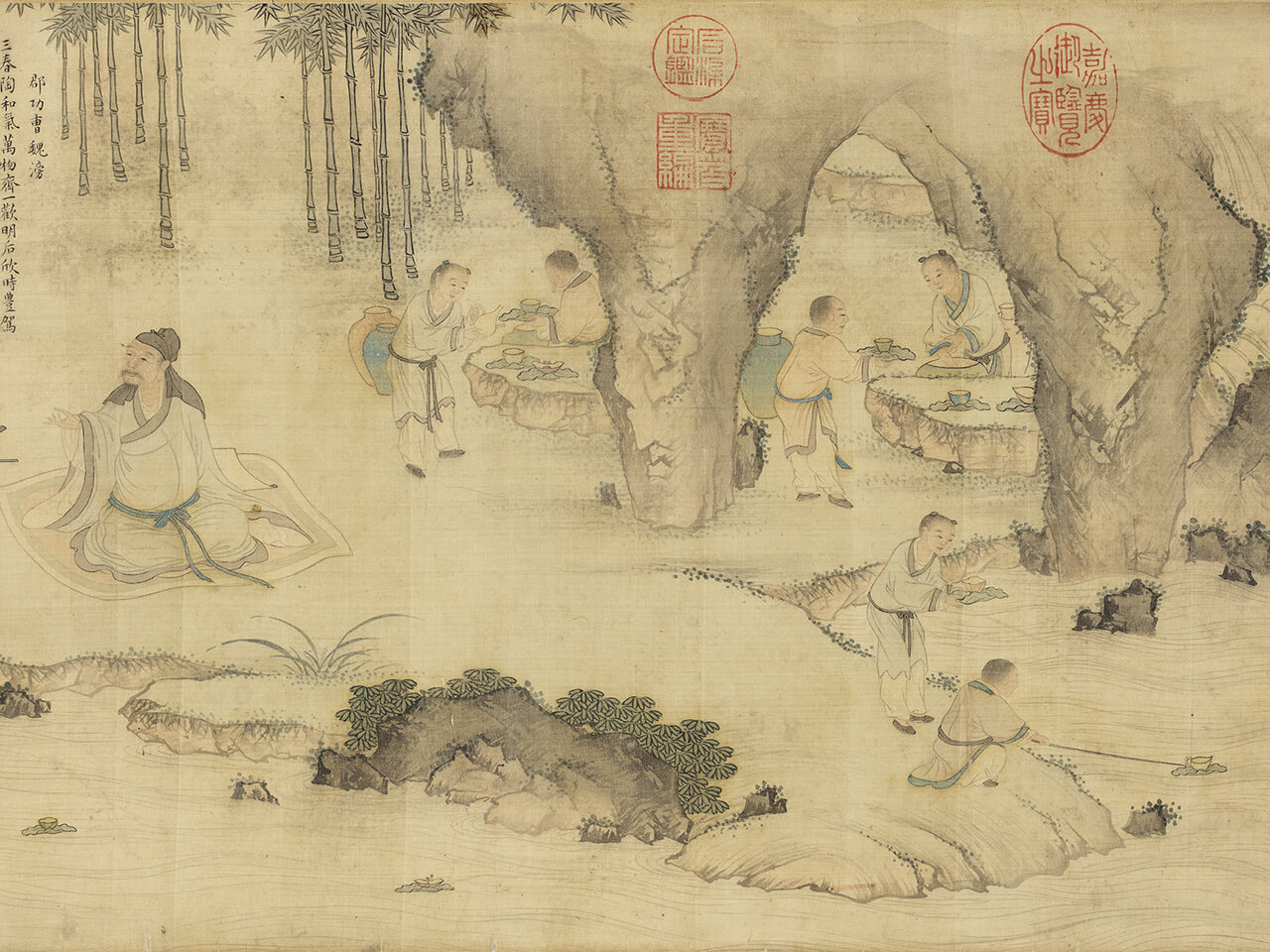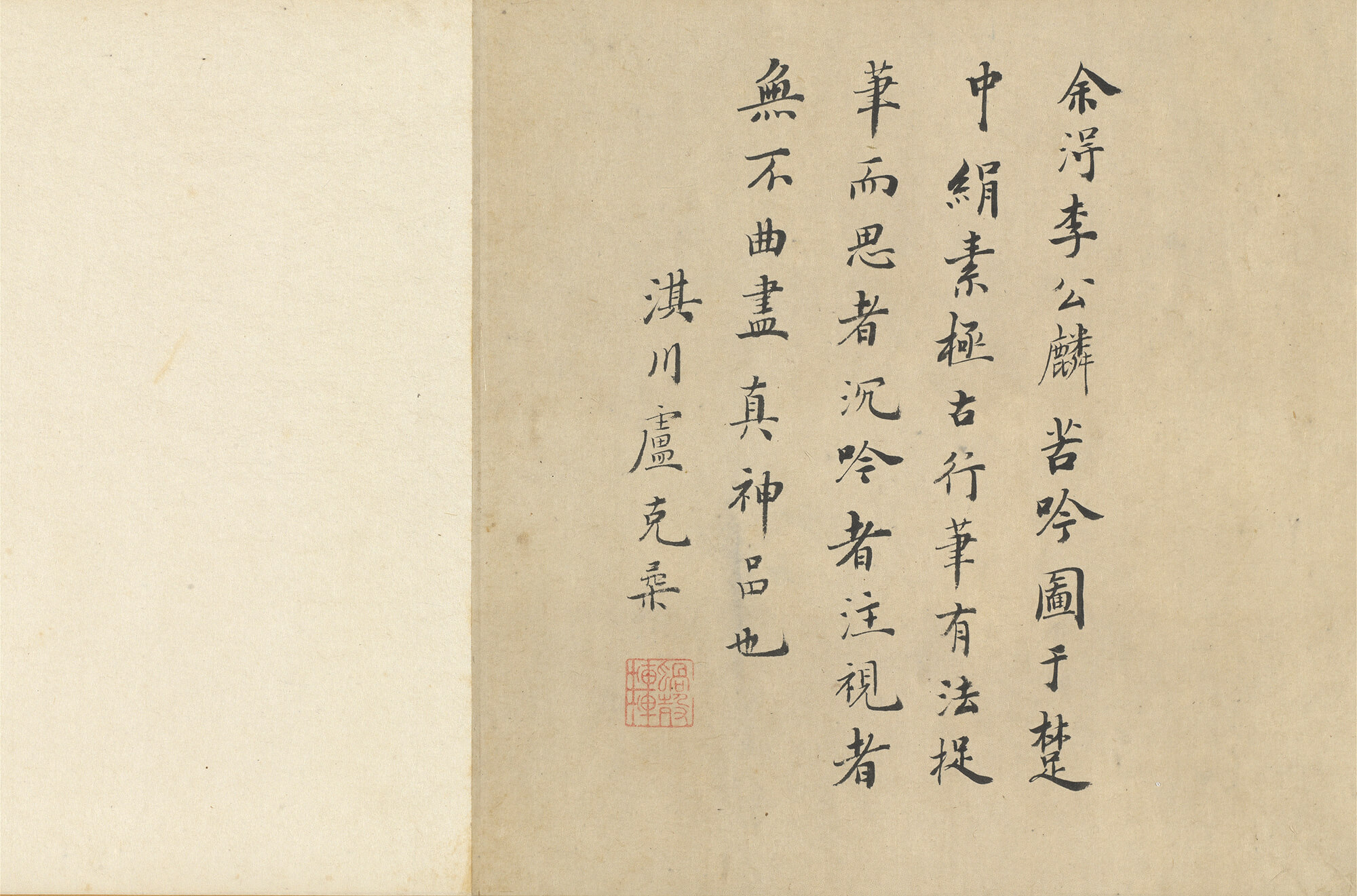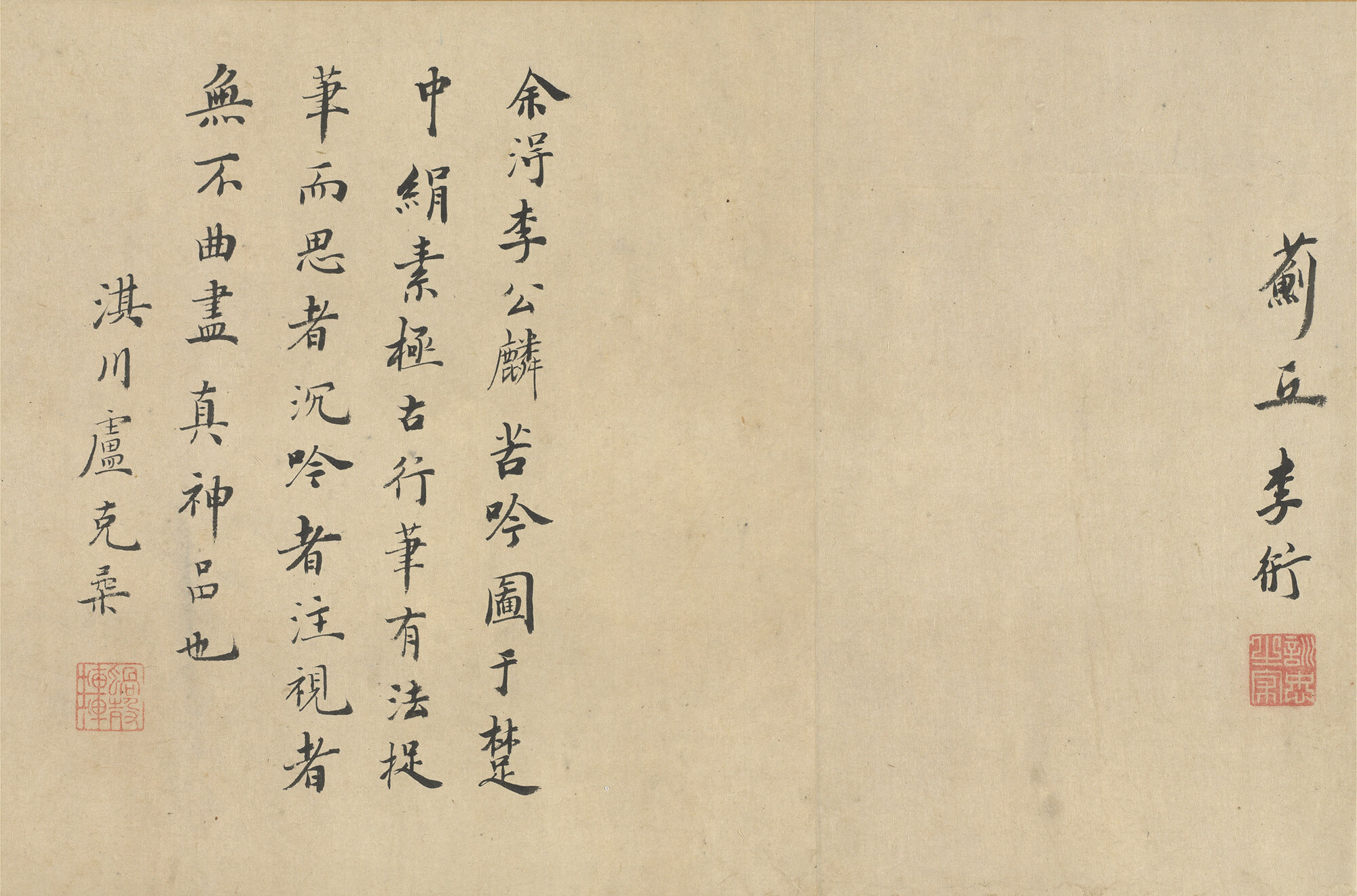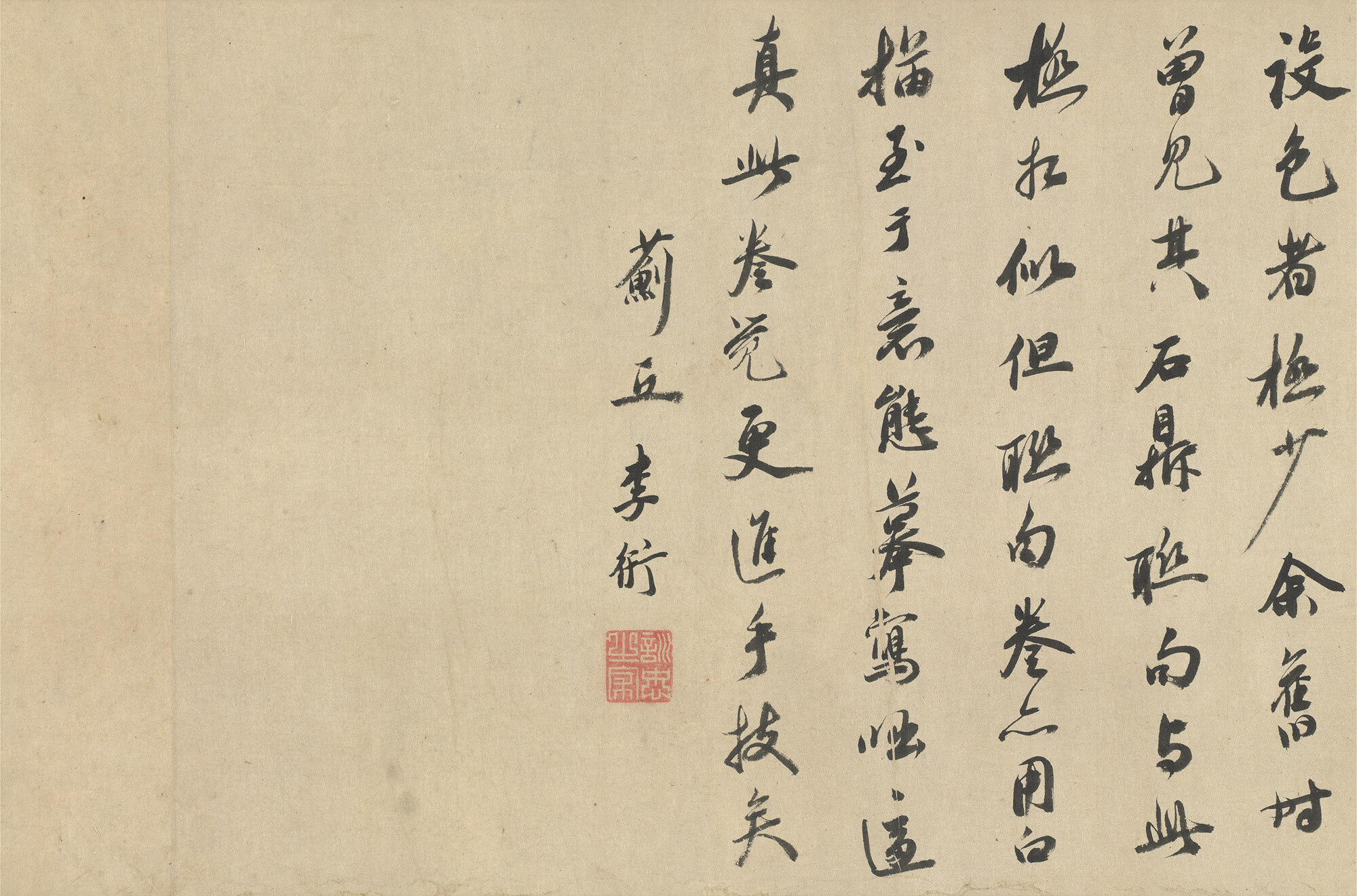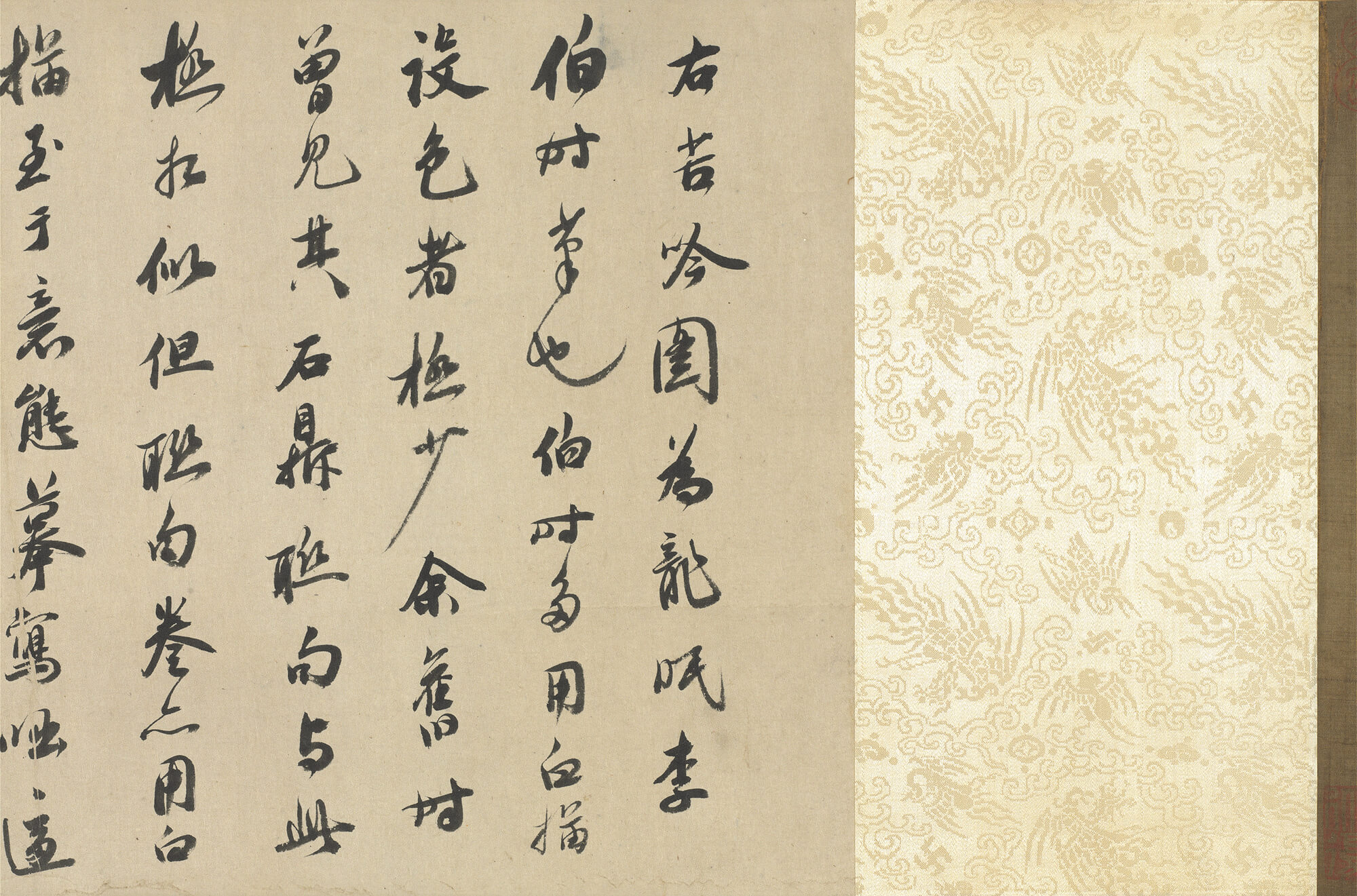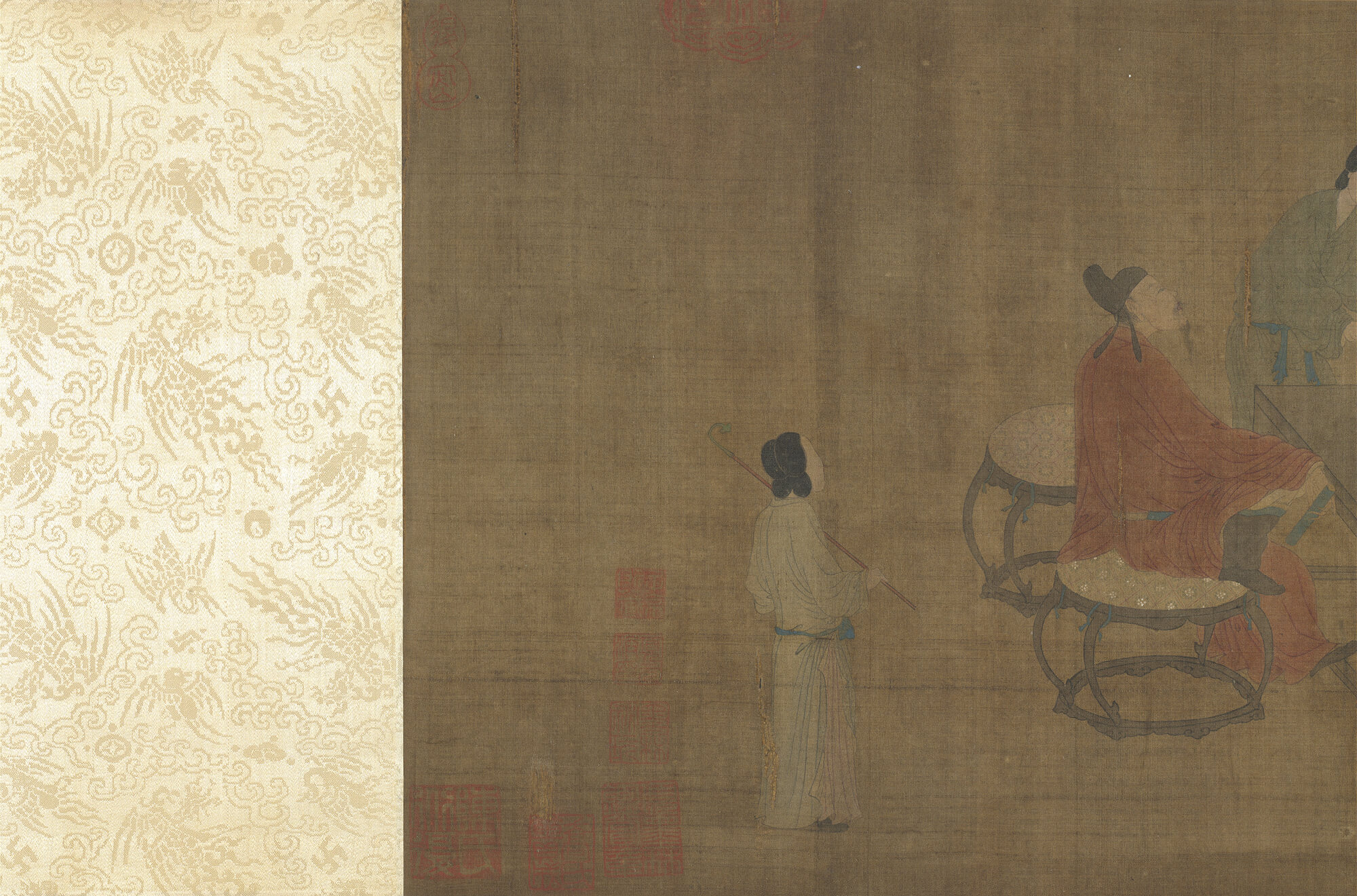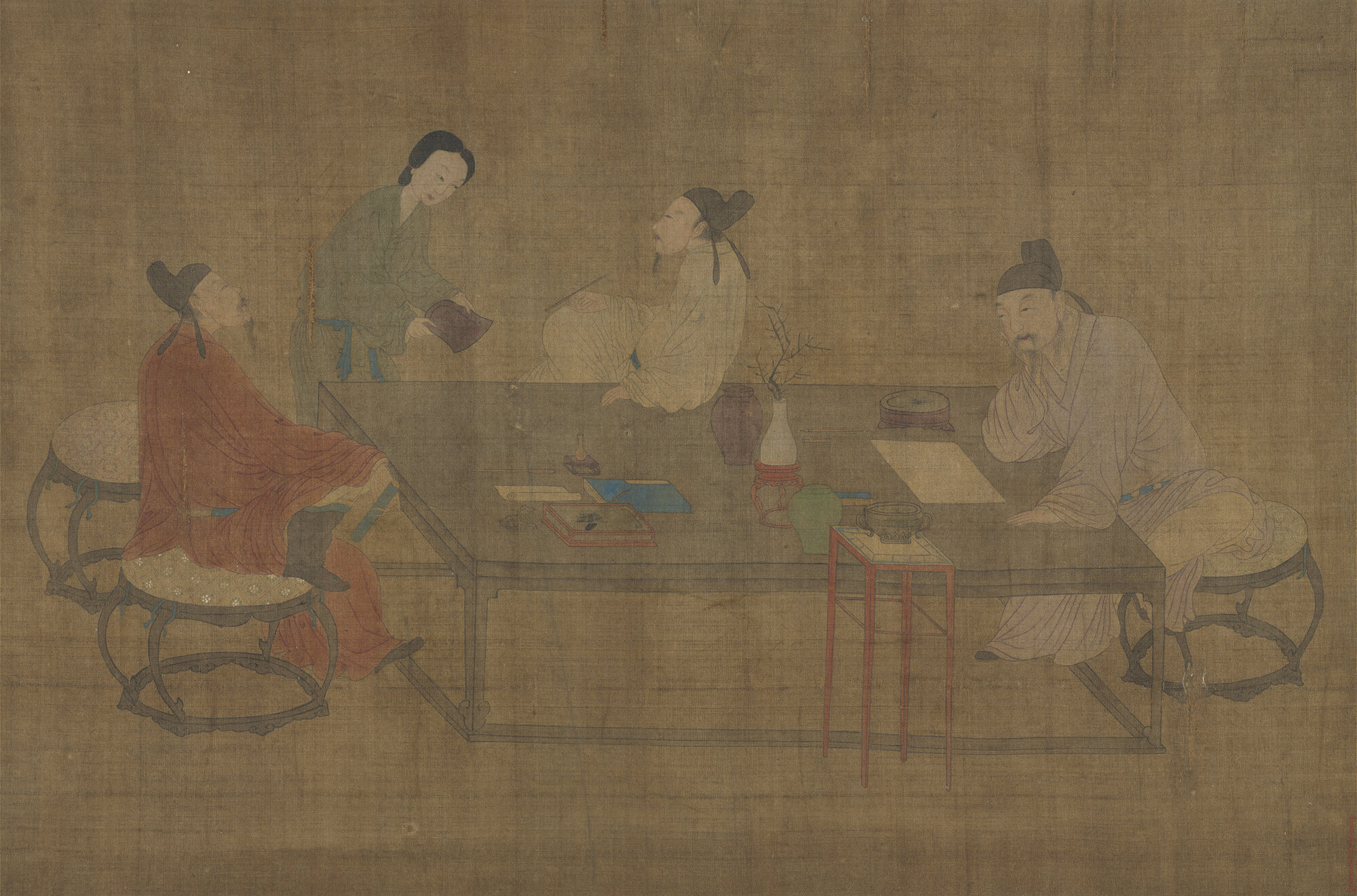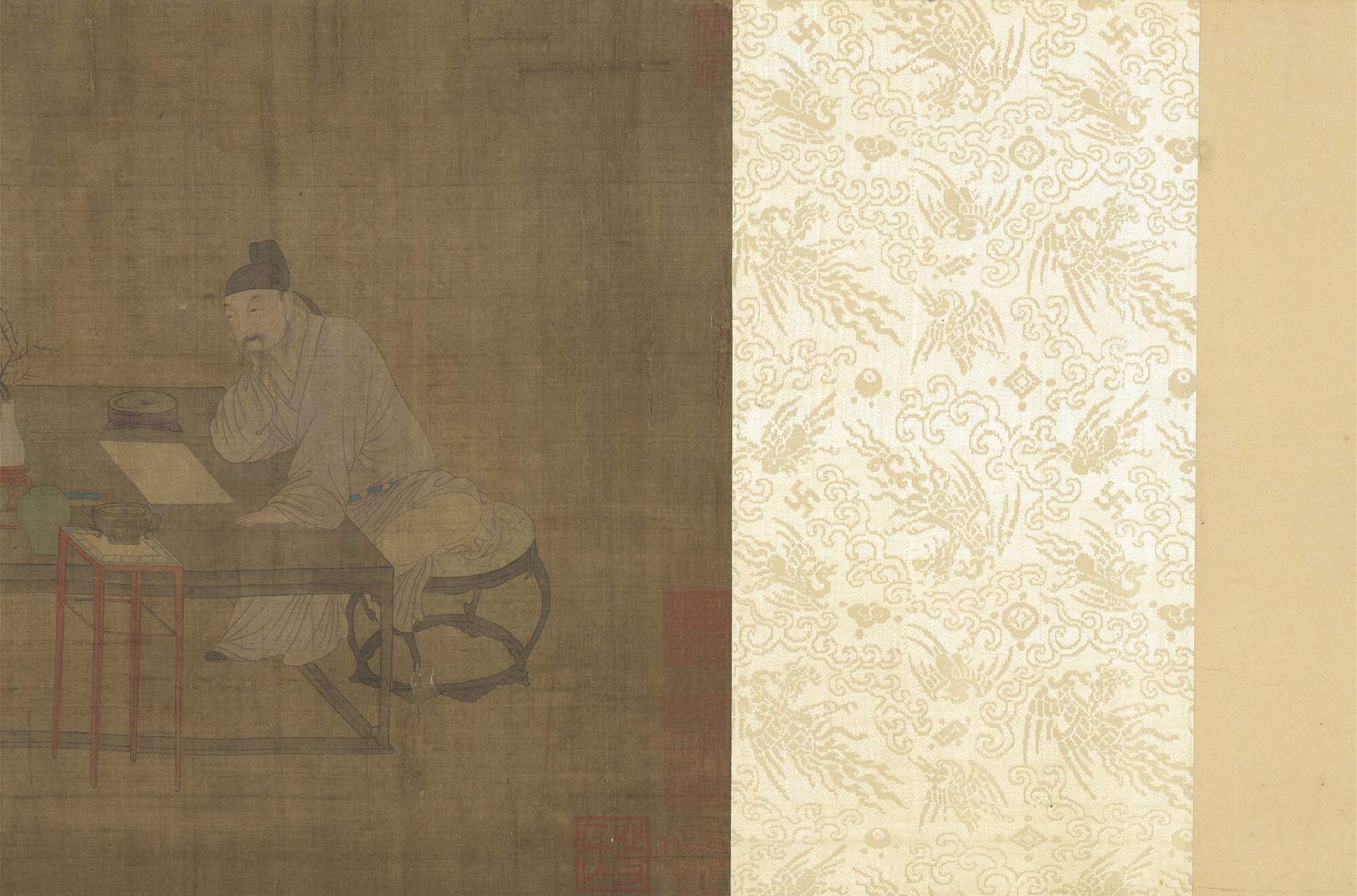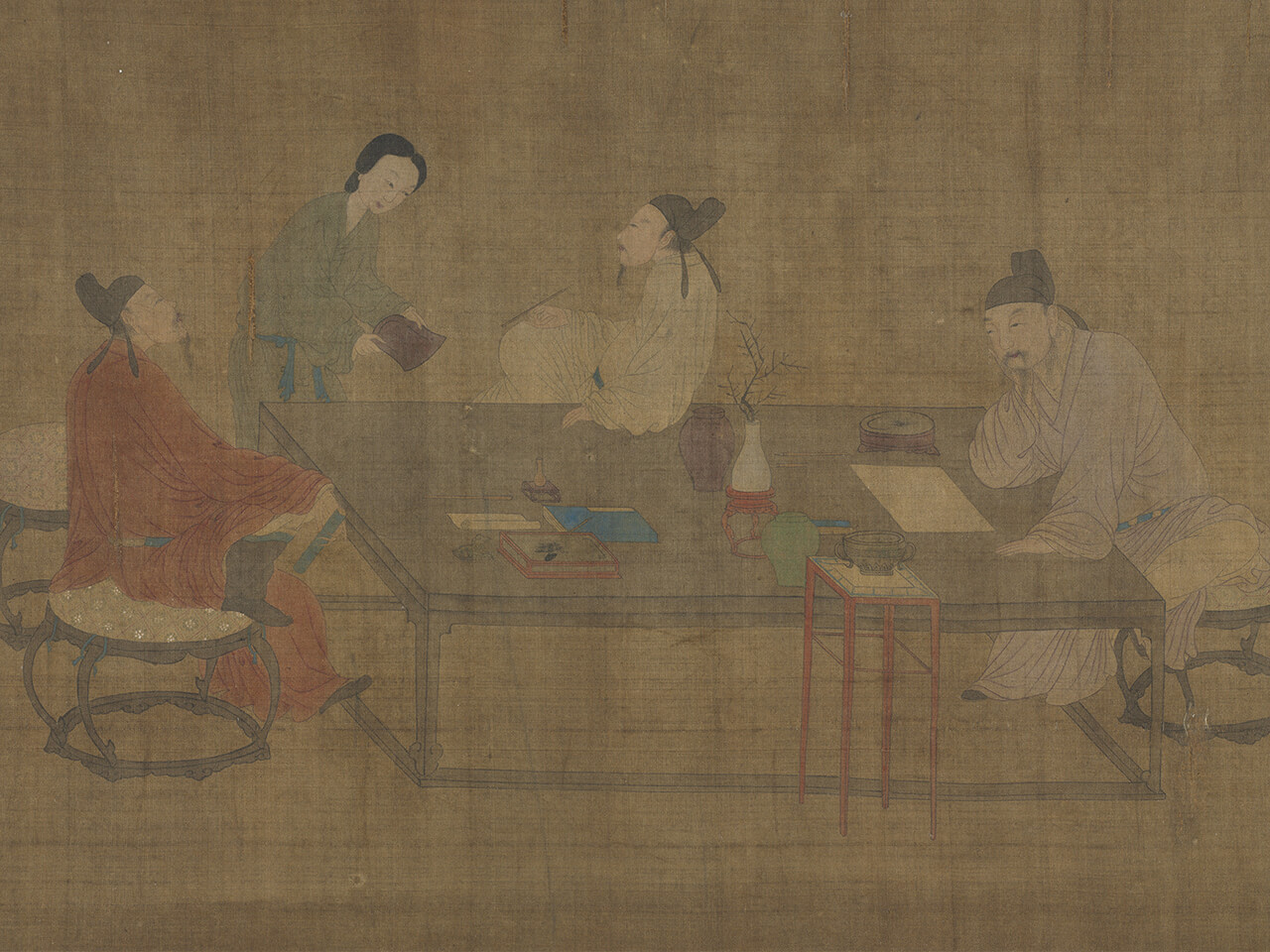The Model for Elegant Gatherings
In the third lunar month of 353 AD, Wang Xizhi invited a group of friends to a gathering at his Orchid Pavilion located at Mount Guiji in Zhejiang. A grand event bringing together renowned figures, Wang Xizhi’s "Orchid Pavilion Preface," regarded as the premier example of running script in Chinese calligraphy, was a product of it. With Tang dynasty emperors favoring Wang’s calligraphy and increasingly frequent social interaction between literati, this gathering at the Orchid Pavilion gradually overshadowed all other literati meetings to become the model for this type of event. Scholars seated at a banquet, wine cups floating on a winding stream, and competition to compose poetry (the "punishment" being to drink the wine) became the paradigm for later generations to imitate in their own gatherings.
-
Original Dingwu Copy of the Orchid Pavilion Preface
- Wang Xizhi (303-361), Jin dynasty
- Ink rubbing of a stone engraved copy, Song dynasty
Although the original "Orchid Pavilion Preface" by the "Sage Calligrapher" Wang Xizhi has long been lost, innumerable handwritten imitations and ink rubbings of engraved copies circulated over the ages. The Dingwu copy is one of them and generally regarded as the best surviving engraving of the Preface. The particular rubbing here represents the complete contents of the Dingwu copy of the Preface, and Song and Yuan dynasty collection records clearly point to it is an old rubbing. Various inscriptions and the Yuan emperor Wenzong’s court seal indicate this work was once viewed at several important gatherings in the Yuan dynasty.
Although this version had been copied and engraved in stone, and repeated ink rubbings were made, the fluid and graceful manner of Wang Xizhi’s running script in the original calligraphy is still evident.
-
Ablution Ceremony at the Orchid Pavilion
- Li Zongmo (fl. 16th-17th c.), Ming dynasty
For Wang Xizhi’s banquet gathering at his Orchid Pavilion in the fourth century AD, he left behind his most famous work of calligraphy, the "Orchid Pavilion Preface." However, not until the ninth century did the Orchid Pavilion appear in painting. The most widely circulating version known today is a rubbing from a stone engraving based on Li Gonglin’s painting of "Ablution Ceremony at the Orchid Pavilion." It starts with a pavilion by the water with participants seated along both sides of a winding stream; inscriptions give the name and title of each figure along with the poetry he composed at the time. Judging from the contents, the handscroll here clearly belongs to this tradition.
The delineation of the figures in this work is refined and the coloring elegant. The details of the scenery are also rich, adding to the pleasure of viewing the painting.
-
Painstaking Composition
- Attributed to Li Gonglin (ca. 1049-1106), Song dynasty
In this painting, three figures seated around a table are either holding a scroll and leaning deep in thought, holding a brush in contemplation, or staring at a blank scroll with head in hand. It captures a scene of scholars searching for inspiration and unable to put brush to paper. The forms of the figures are delicate and the lines fluid.
Although the title label for the scroll gives the Song master Li Gonglin as the painter, it is probably a work of the Ming dynasty (1368-1644) instead.
